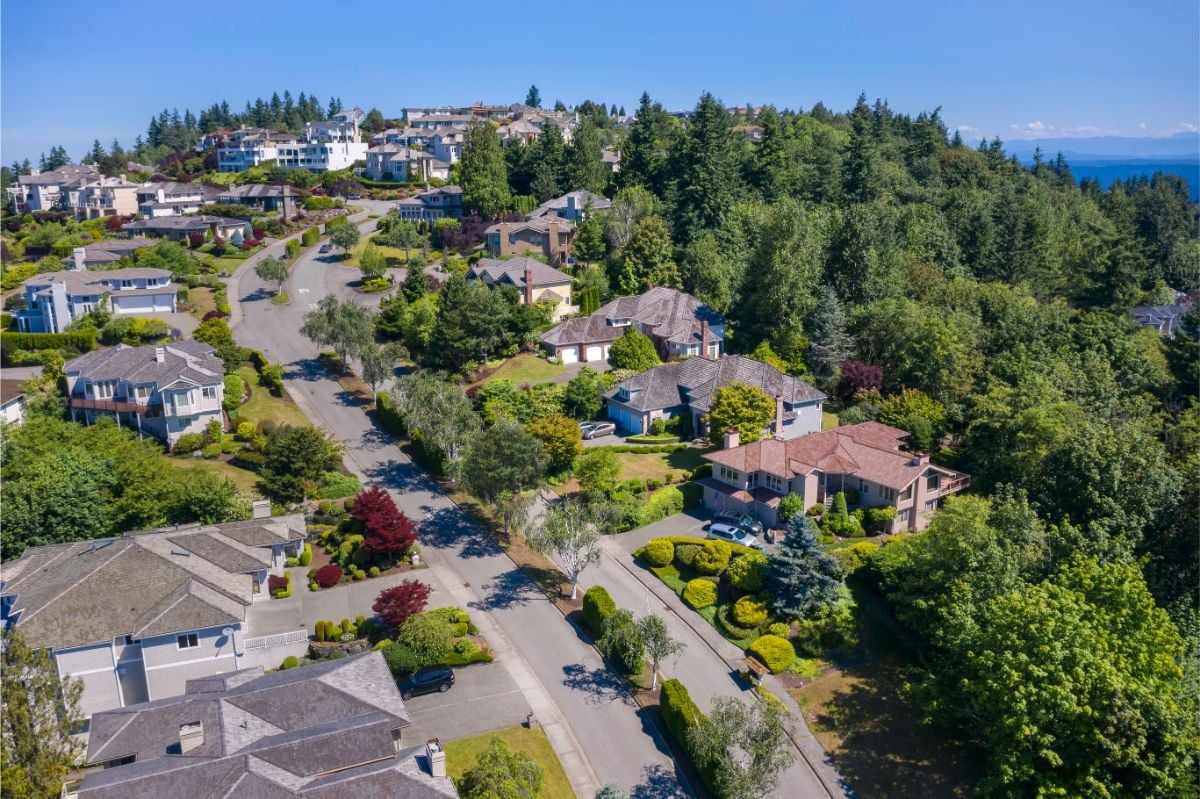
Washington State offers much more than Seattle and Mount Rainier. Dozens of charming communities showcase the Pacific Northwest’s authentic character.
These lesser-known destinations let you experience local culture, stunning landscapes, and unique attractions. Larger cities cannot match the intimacy of these towns.
You’ll find towns nestled in the Cascade Mountains and perched on Puget Sound islands. Others are tucked into fertile valleys or situated along scenic rivers throughout the state.
From historic railroad communities to artistic enclaves, these hidden gems provide outdoor adventures and cultural experiences. Some offer potential relocation opportunities for those seeking small-town living in a beautiful state.
30. Omak
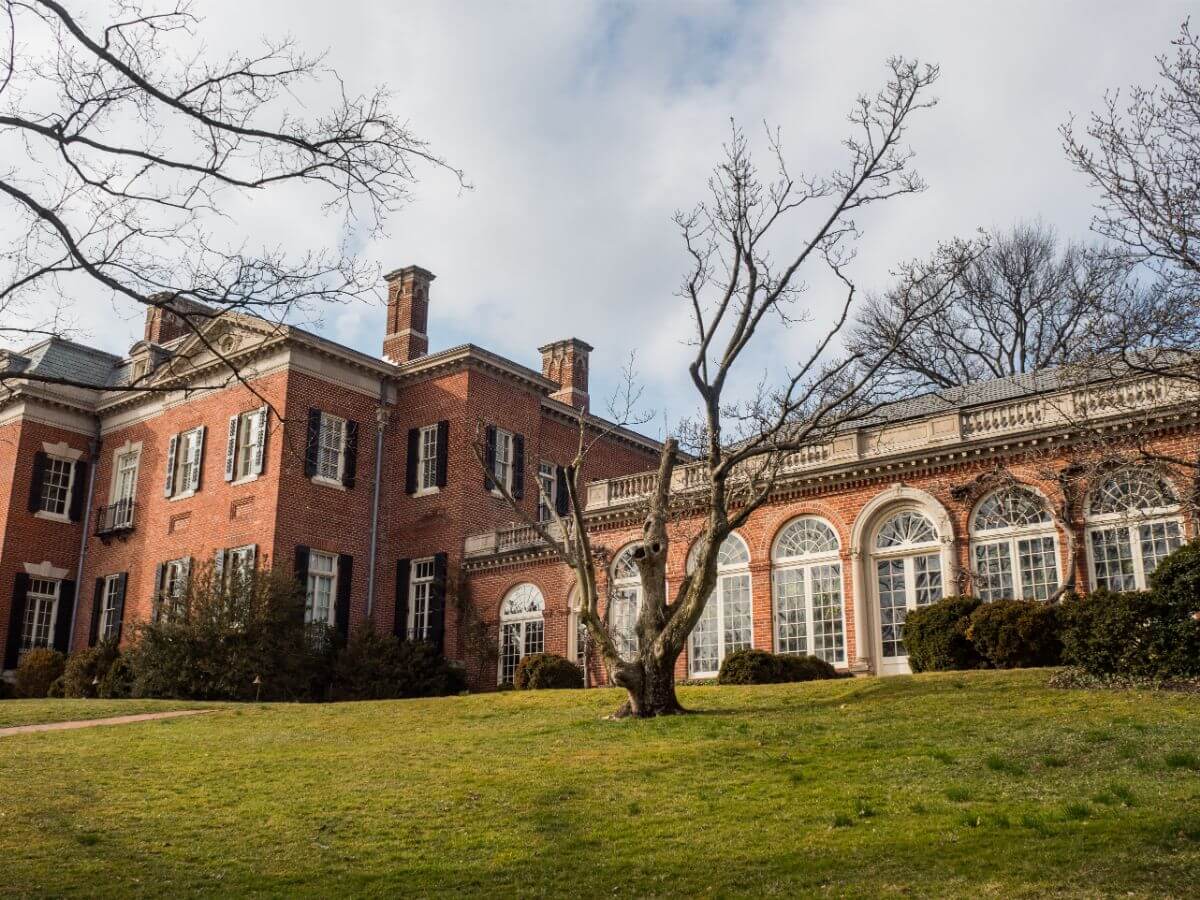
Omak is located in the Okanogan Highlands of north-central Washington, surrounded by rolling hills and the Okanogan River. About 4,800 residents call this small town home, enjoying an authentic slice of rural Washington life away from tourist crowds.
The town celebrates its deep-rooted Indigenous heritage through various cultural events. Every August, the Omak Stampede features the world-renowned Suicide Race, where riders charge down a steep hill into the Okanogan River.
You can enjoy excellent outdoor recreation nearby. The mountains and rivers create perfect settings for hiking, fishing, and other nature activities.
The Okanogan National Forest offers additional trails and camping spots. You have many ways to explore the outdoors.
Agriculture and timber drive Omak’s economy. The region produces apples, wheat, and cattle, while forestry operations support local jobs.
Mid-Valley Hospital provides healthcare services and employment for residents. These industries form the backbone of the local workforce.
Housing costs remain much lower than in Washington’s urban areas. The median home price sits well below state averages, making homeownership more accessible.
Utilities and daily expenses also cost less than in major cities. Families can save on living costs here.
Omak maintains essential services such as schools, medical facilities, and local businesses. Dining and entertainment options are limited, but the close-knit community offers genuine hospitality and local events throughout the year.
Where is Omak?
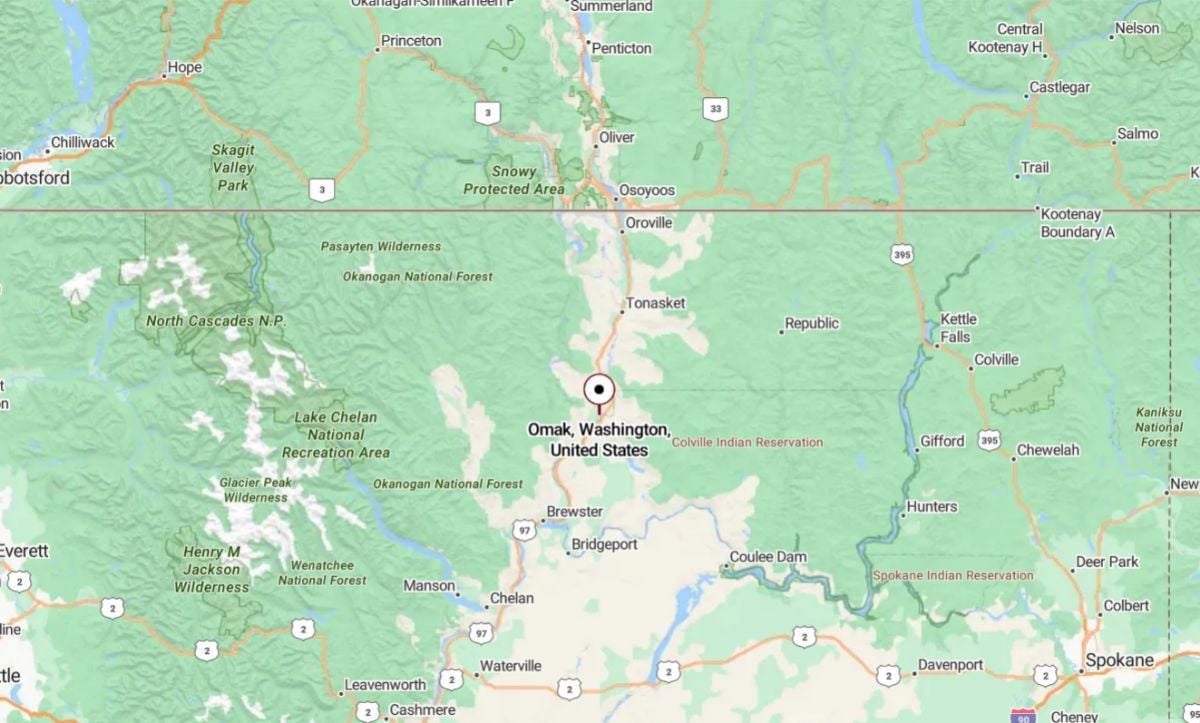
Omak is a small city located in north-central Washington State, nestled in the Okanogan Valley along the Okanogan River. It lies approximately 45 miles south of the Canadian border and around 140 miles northwest of Spokane.
Surrounded by natural beauty, Omak is known for its rich Native American heritage, proximity to the Colville Indian Reservation, and the famous annual Omak Stampede rodeo.
29. Ritzville
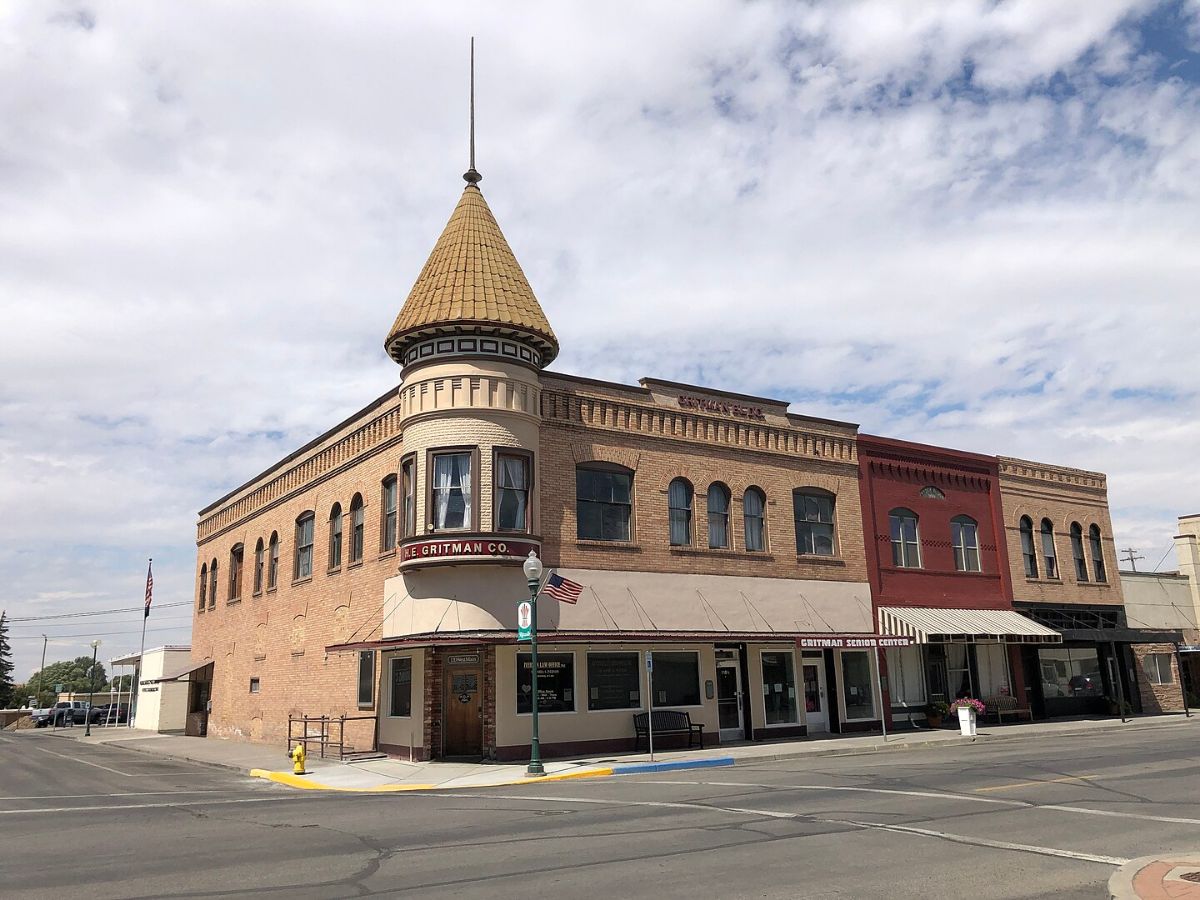
Ritzville is located in southeastern Washington along Highway 395. The town serves as the county seat of Adams County and has about 1,700 residents.
The local economy relies on agriculture, especially wheat farming and cattle ranching. Farming operations dominate the landscape and create jobs in agricultural services and equipment.
Ritzville’s downtown district features well-preserved early 20th-century architecture. The historic Carnegie Library and vintage storefronts reflect the town’s railroad heritage.
For outdoor fun, you can visit Ritzville Municipal Park for family activities and picnics. The park offers playgrounds, sports facilities, and open spaces.
The town hosts the annual Ritzville Blues, Brews & BBQ Festival, drawing visitors from across the region. Local restaurants serve hearty meals that highlight the area’s agricultural abundance.
Housing costs remain affordable compared to major metropolitan areas in Washington. Ritzville offers a tight-knit community where neighbors know each other and local businesses support daily life.
The climate brings hot, dry summers and cold winters typical of eastern Washington. This weather supports the region’s wheat-growing industry.
Where is Ritzville?
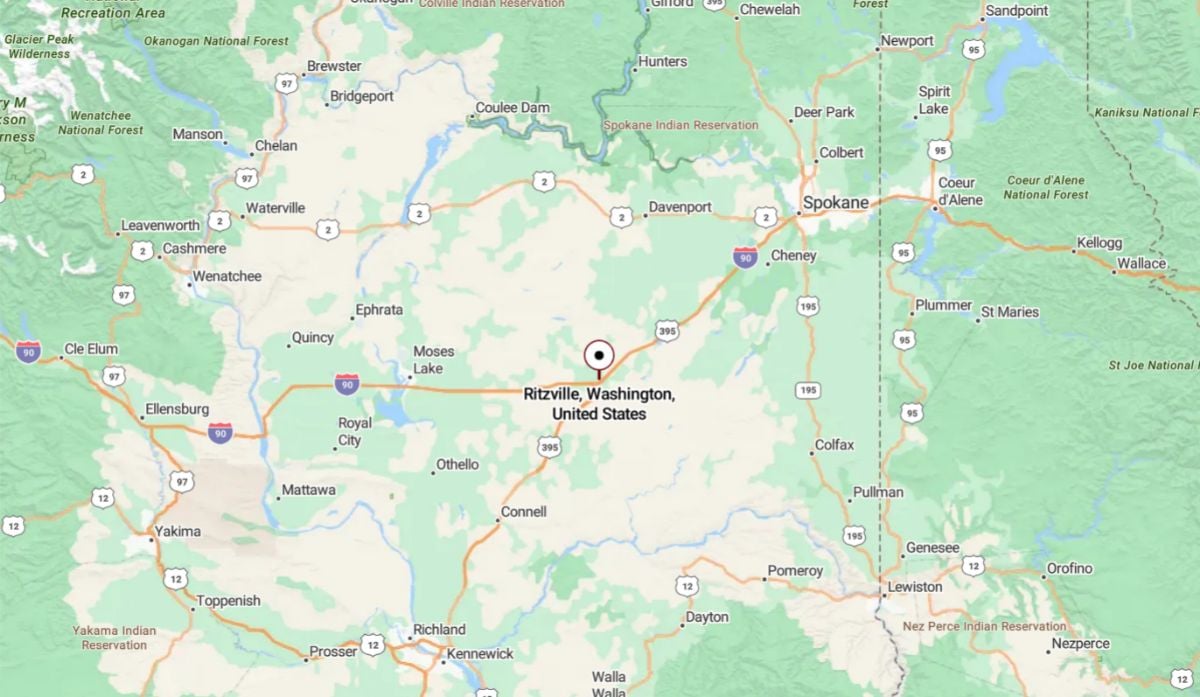
Ritzville is a small city in Adams County, located on the Columbia Plateau in the eastern part of the state. It lies at the crossroads of Interstate 90 and U.S. Route 395, about 50 miles southwest of Spokane.
Surrounded by expansive wheat fields, Ritzville is known for its historic downtown district, which reflects its past as an important wheat shipping center.
28. Vashon Island

Vashon Island is set in Puget Sound between Seattle and Tacoma, giving you a peaceful escape from city life. The island is about 13 miles long and eight miles wide at its widest point.
A strong artistic community defines much of the island’s character. Local galleries and studios showcase the work of resident artists and craftspeople.
The island maintains a rural feel with a close-knit mix of longtime residents and newcomers. You will notice a strong sense of community throughout the area.
Point Robinson Lighthouse offers scenic views and historical significance. Built in 1915, the lighthouse provides great photo opportunities along the shoreline.
You can find numerous farm stands selling fresh produce and local goods. Agriculture, tourism, and the arts are key economic sectors on the island.
Lisabeula Park gives you hiking trails and beach access for outdoor fun. The park features old-growth forests and waterfront views of Puget Sound.
To reach Vashon Island, you need to take a ferry from either Fauntleroy in West Seattle or Point Defiance in Tacoma. A car is helpful to explore destinations beyond downtown.
The downtown area offers restaurants, cafes, and shops near the ferry terminal. This central district serves as a hub for residents and visitors alike.
Housing costs are lower than in Seattle or Tacoma, making the island attractive for those seeking a quieter lifestyle. The ferry commute adds time but provides scenic water views.
Where is Vashon Island?
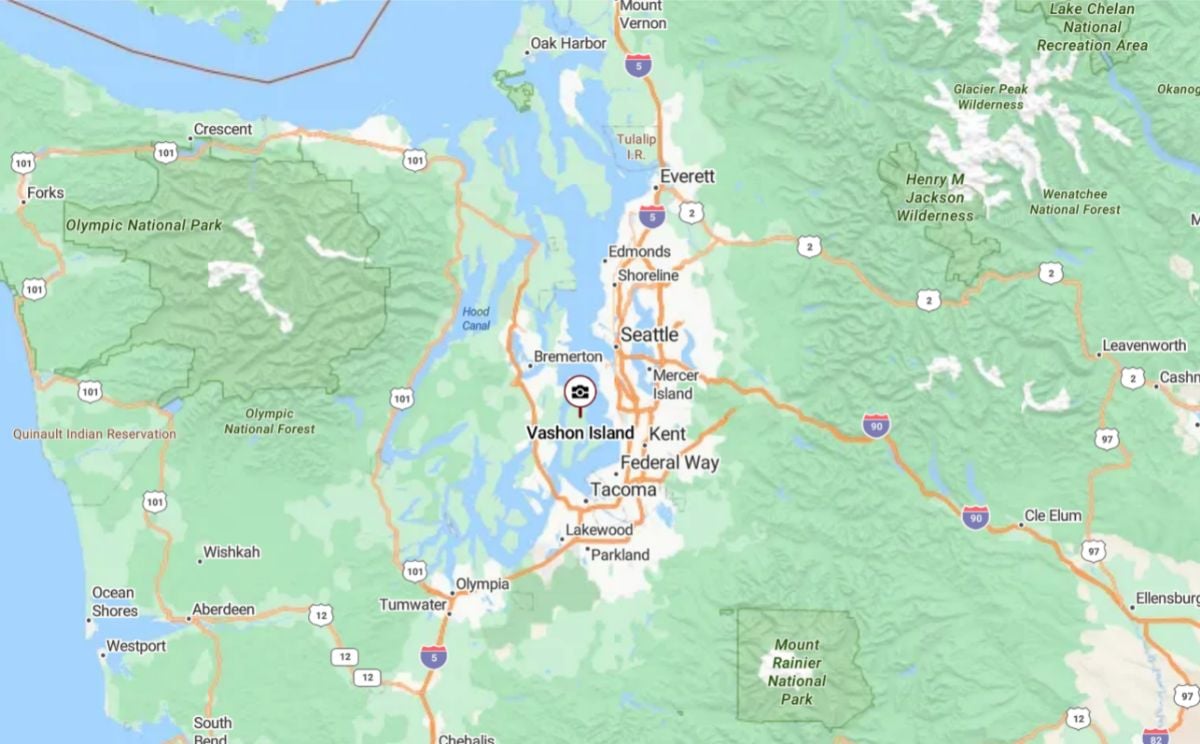
Vashon Island is located in Puget Sound in western Washington, between Seattle to the east and Tacoma to the south. Accessible only by ferry, the island offers a peaceful, rural atmosphere with forests, beaches, and farmland.
It is known for its strong artistic community, small-town charm, and scenic views of Mount Rainier and the Olympic Mountains.
27. Stevenson

Stevenson is located in the Columbia River Gorge, offering stunning views of the river and surrounding mountains. The town provides a perfect escape from city life with its friendly atmosphere and natural beauty.
You are surrounded by breathtaking scenery that makes this location special. Stevenson serves as a gateway to outdoor adventures while maintaining small-town charm.
Hiking trails, fishing spots, and water sports are available along the Columbia River. You can explore the nearby gorge or simply enjoy the scenic views from town.
Tourism and outdoor recreation support the local economy. Businesses cater to visitors seeking adventure, offering gear and supplies for outdoor activities.
Stevenson provides outdoor adventures, local shopping, and dining experiences. The town offers a slower pace of life while keeping you connected to nature.
Housing costs are reasonable compared to larger Washington cities. The community values its natural surroundings and outdoor lifestyle.
The location gives you easy access to Portland and other Columbia River Gorge attractions. You can enjoy small-town living with access to urban amenities when needed.
Where is Stevenson?
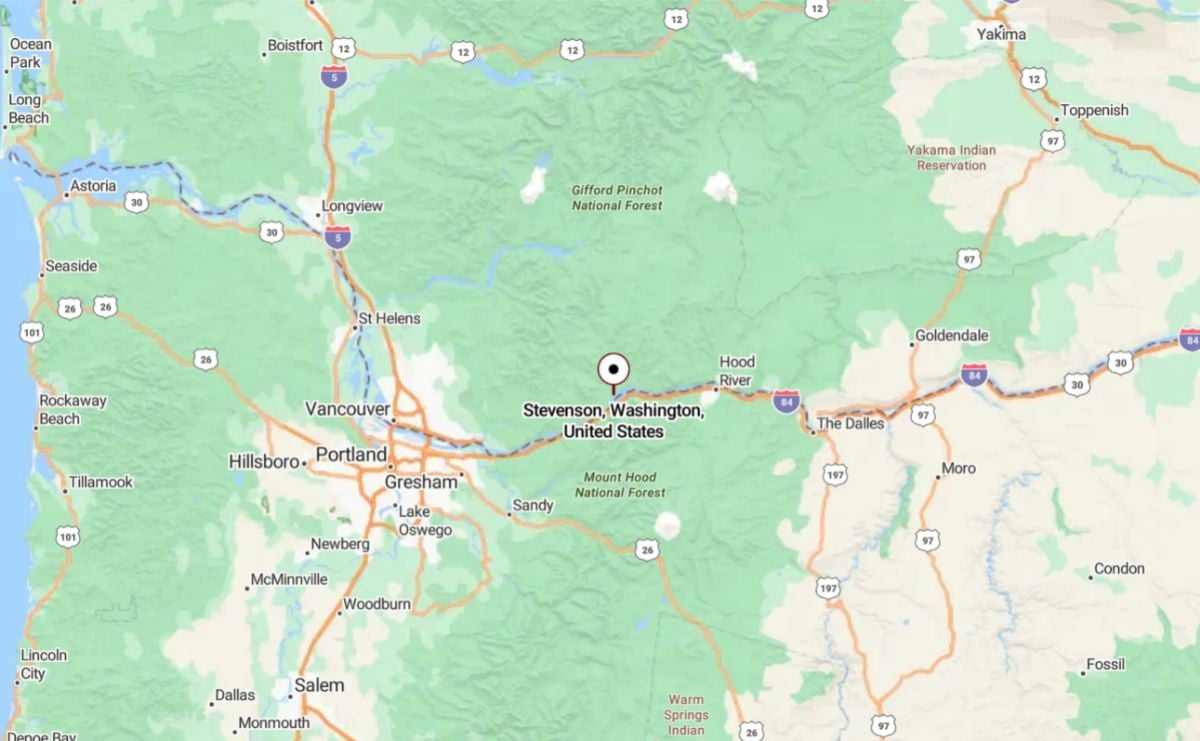
Stevenson is a small city located on the north bank of the Columbia River in the heart of the Columbia River Gorge National Scenic Area. It sits about 45 miles east of Portland, Oregon, and directly across the river from Cascade Locks.
Surrounded by dramatic cliffs and forests, Stevenson is known for its access to outdoor recreation like hiking, windsurfing, and scenic drives along State Route 14.
26. White Salmon
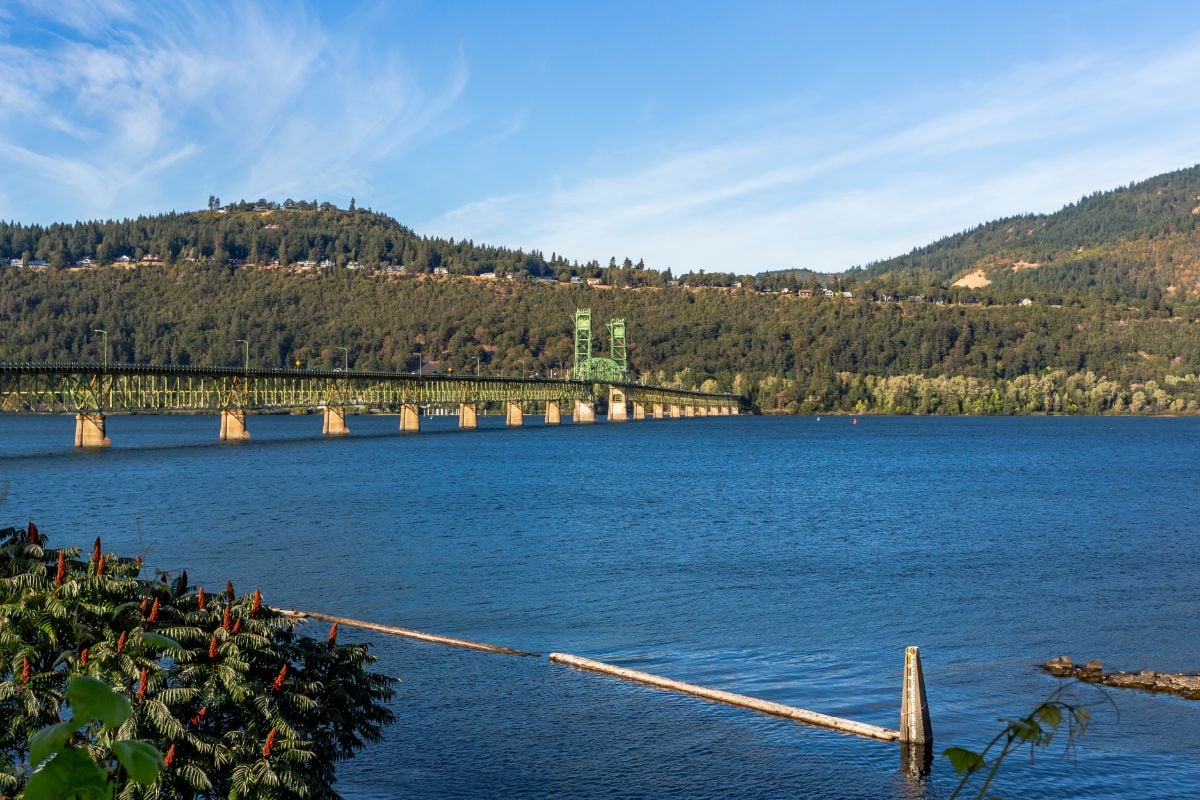
White Salmon sits between the White Salmon River and Jewett Creek in the Columbia River Gorge. This family-friendly town offers a quieter alternative to the bustling Hood River across the river in Oregon.
The town gives you easy access to outdoor recreation along the Lewis and Clark Highway. You can find riverside spots for picnicking and rock skipping along the historic railway route.
White Salmon Baking Company, opened in 2015, is one of the area’s top bakeries. The shop serves lattes, breakfast, lunch, and sweet treats just off the main street.
The town sits within mossy forests with rivers and mountain views. Espresso bars and glass-blowing studios operate side by side, while wildflowers add natural fragrance.
White Salmon serves as a gateway to Columbia River Gorge attractions. You are within reach of hiking trails, river activities, and scenic drives throughout the region.
The town maintains a laid-back atmosphere with touches that appeal to visitors seeking small-town charm. Local businesses focus on outdoor recreation, food, and artisan crafts.
White Salmon is convenient for exploring the broader Columbia River Gorge while offering a relaxed pace.
Where is White Salmon?
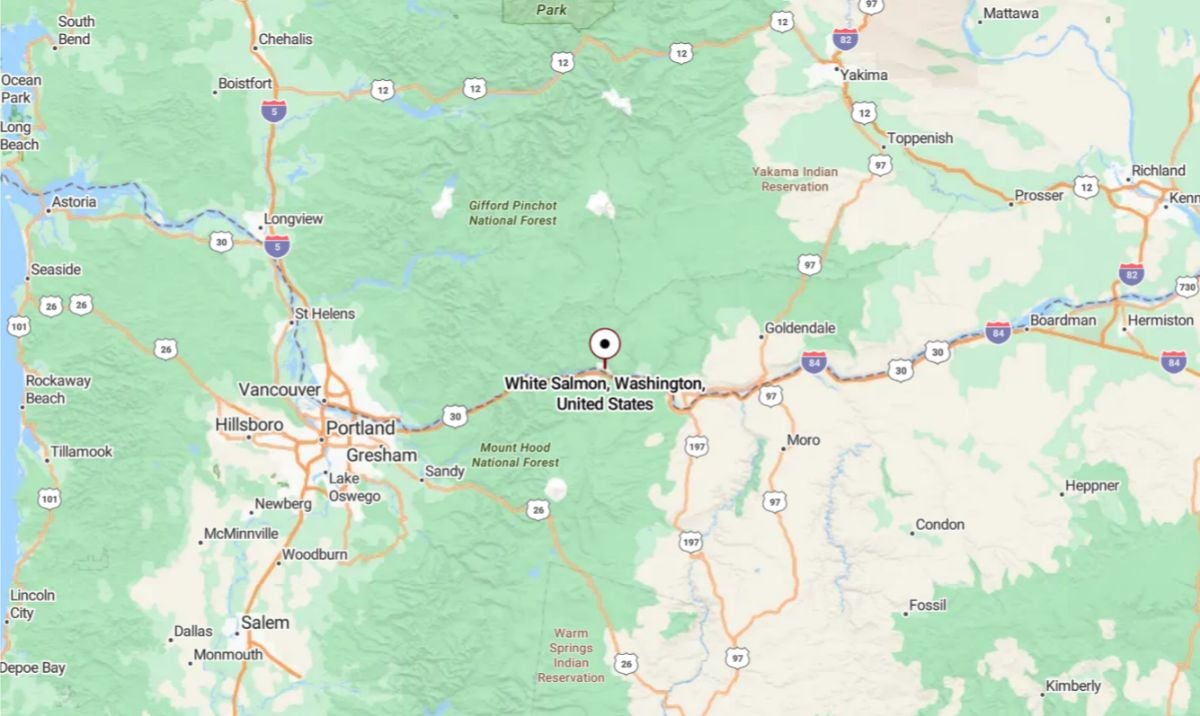
White Salmon is a small city in Klickitat County perched on a bluff overlooking the Columbia River in the Columbia River Gorge. It lies about 65 miles east of Portland, Oregon, directly across the river from Hood River.
Known for its outdoor recreation and mountain views, the town offers activities like rafting, windsurfing, hiking, and biking, all within a vibrant, artsy small-town atmosphere.
25. North Bend
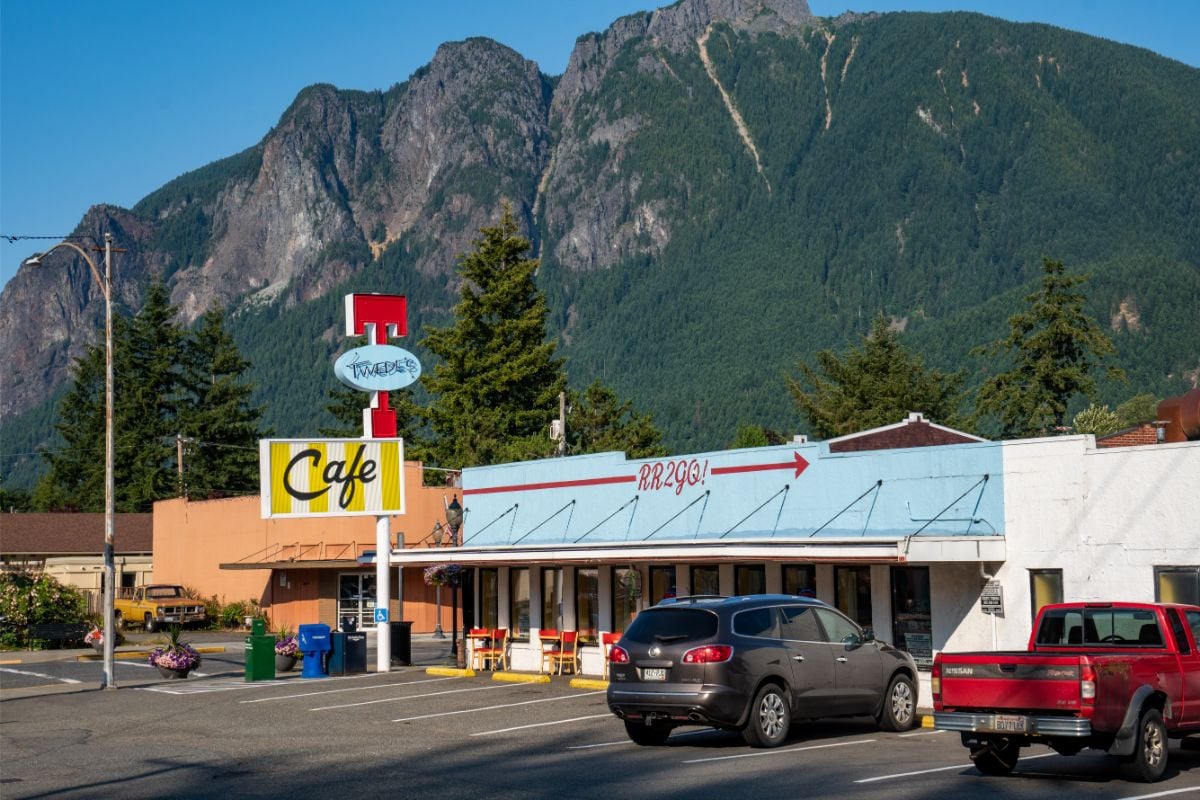
North Bend is situated along Interstate 90, making it easily accessible for visitors and residents. The town has just over 8,000 people and maintains a community feel despite steady growth.
North Bend’s downtown centers around one historic street lined with local shops and businesses. The town blends small-town charm with modern amenities.
Mount Si dominates the skyline, providing a dramatic backdrop for daily life. The mountain offers hiking trails that attract outdoor enthusiasts from across the region.
The Snoqualmie River flows through the area, adding to the natural beauty. This creates opportunities for fishing, kayaking, and riverside walks.
North Bend serves as a gateway to the Cascade Mountains while remaining close to Seattle. You’re about 30 miles from the city, making it ideal for commuters seeking a quieter lifestyle.
The town features well-maintained neighborhoods with varied housing options. You’ll find everything from historic homes to newer developments.
Outdoor recreation drives much of the local economy and lifestyle. The area attracts hikers, climbers, and nature lovers throughout the year.
North Bend offers a slower pace of life while keeping essential services and amenities nearby. The town provides quality schools, healthcare facilities, and shopping options.
Where is North Bend?
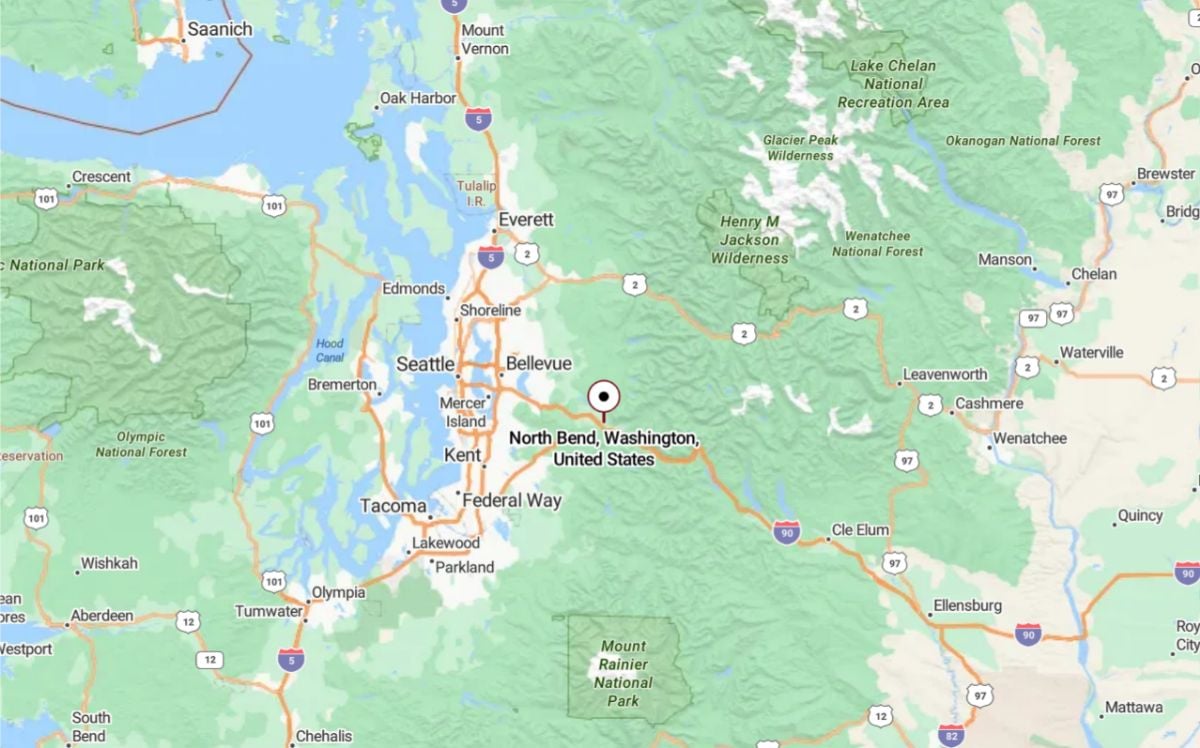
North Bend is a small city located in the foothills of the Cascade Range, about 30 miles east of Seattle along Interstate 90. Nestled beside the South Fork of the Snoqualmie River, it’s surrounded by lush forests and offers easy access to outdoor recreation in nearby mountains and Snoqualmie Pass.
Known for its scenic mountain views—including Mount Si—and its charming downtown, North Bend blends suburban convenience with a gateway to nature.
24. Carnation
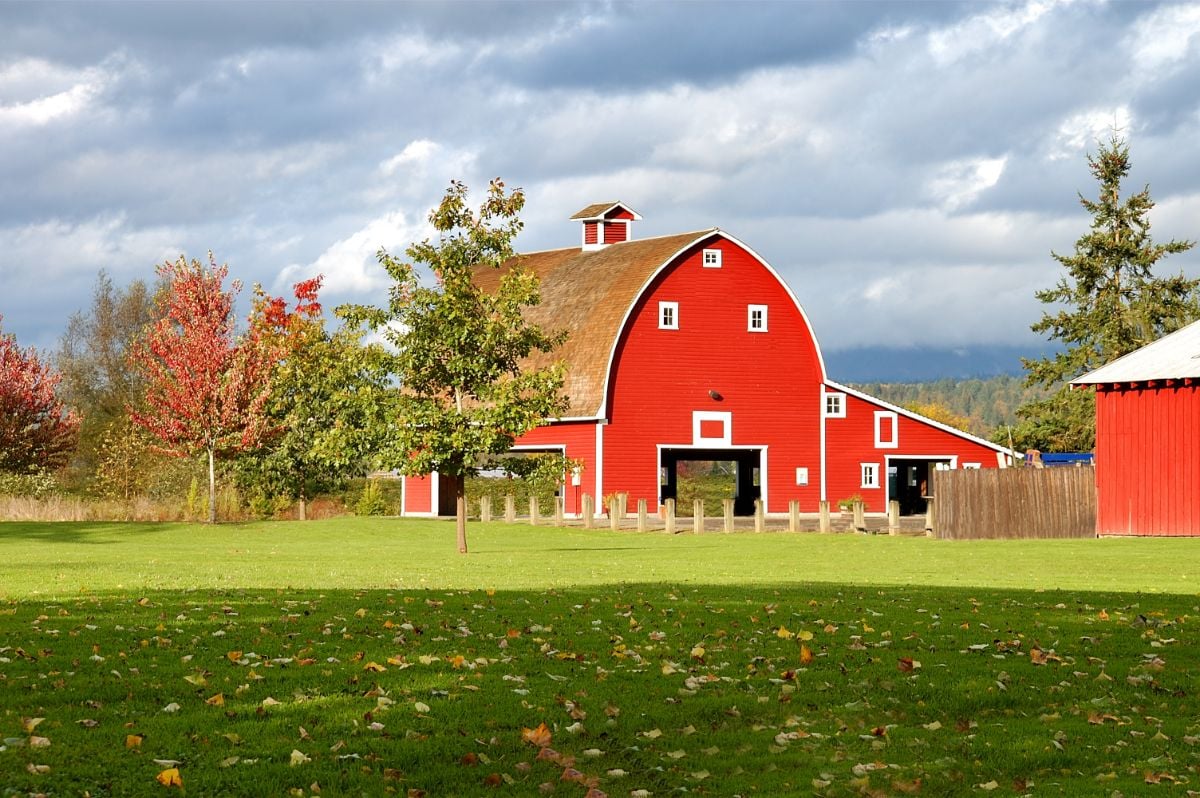
Carnation is in rural King County, about 30 miles east of Seattle. This small Washington town has around 2,200 residents and offers loads of charm.
You can find a peaceful escape from city life in this farming community. The town maintains its rural character with working farms, historic buildings, and wide open spaces.
Carnation serves as a gateway to outdoor adventures. You can explore the nearby Raging River State Forest for hiking and nature experiences.
Lake Margaret offers a serene setting for picnics and relaxation in a wooded area. The town’s agricultural roots remain strong, with dairy farming and other agricultural businesses driving the local economy.
You’ll notice the farming heritage throughout the community in both the landscape and local culture. Carnation offers simple pleasures and access to both nature and metropolitan amenities when needed.
Your commute to Seattle is manageable if you work in the city but prefer small-town living. The community provides a tight-knit atmosphere where neighbors know each other.
Housing costs are typically lower than in Seattle while still providing access to King County services and schools. You can enjoy rural living with urban conveniences within a reasonable drive.
Where is Carnation?
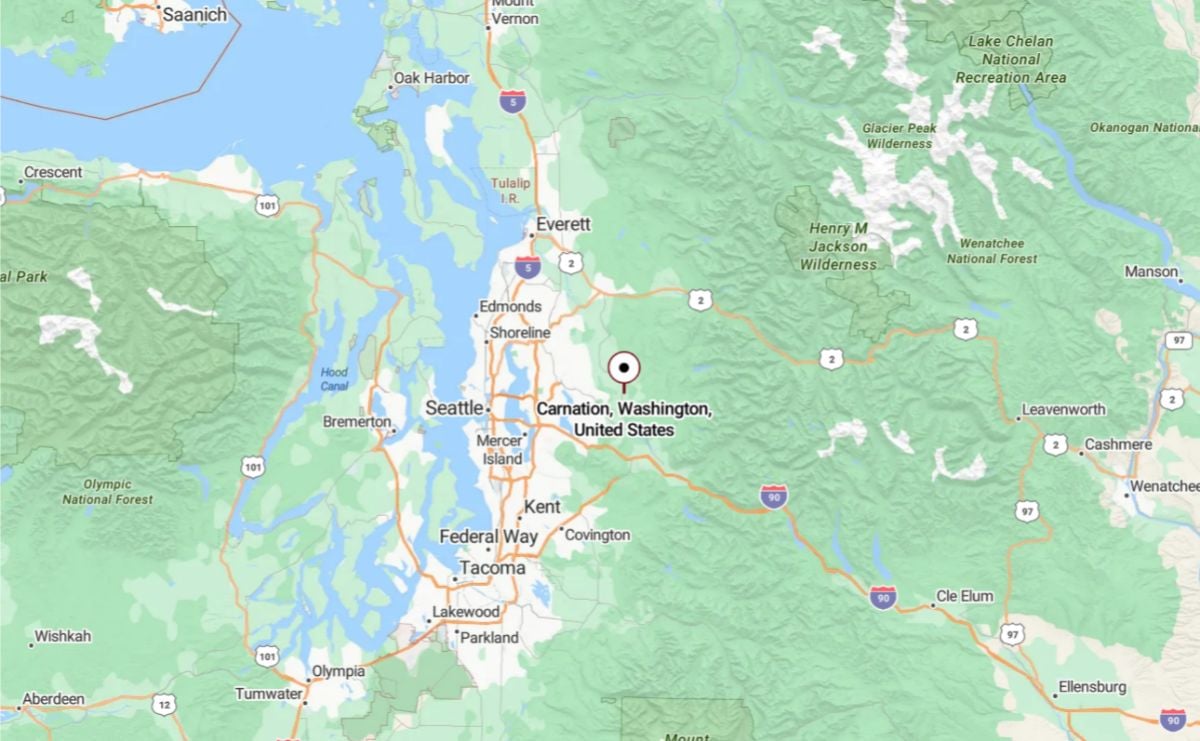
Carnation is a small rural city located in King County within the lush Snoqualmie Valley, where the Snoqualmie and Tolt Rivers meet. It sits about 27 miles east of Seattle, offering a peaceful setting within commuting distance of the city.
Known for its farming heritage and natural surroundings, Carnation is a gateway to outdoor activities like hiking, fishing, and exploring nearby parks and trails.
23. Klahowya
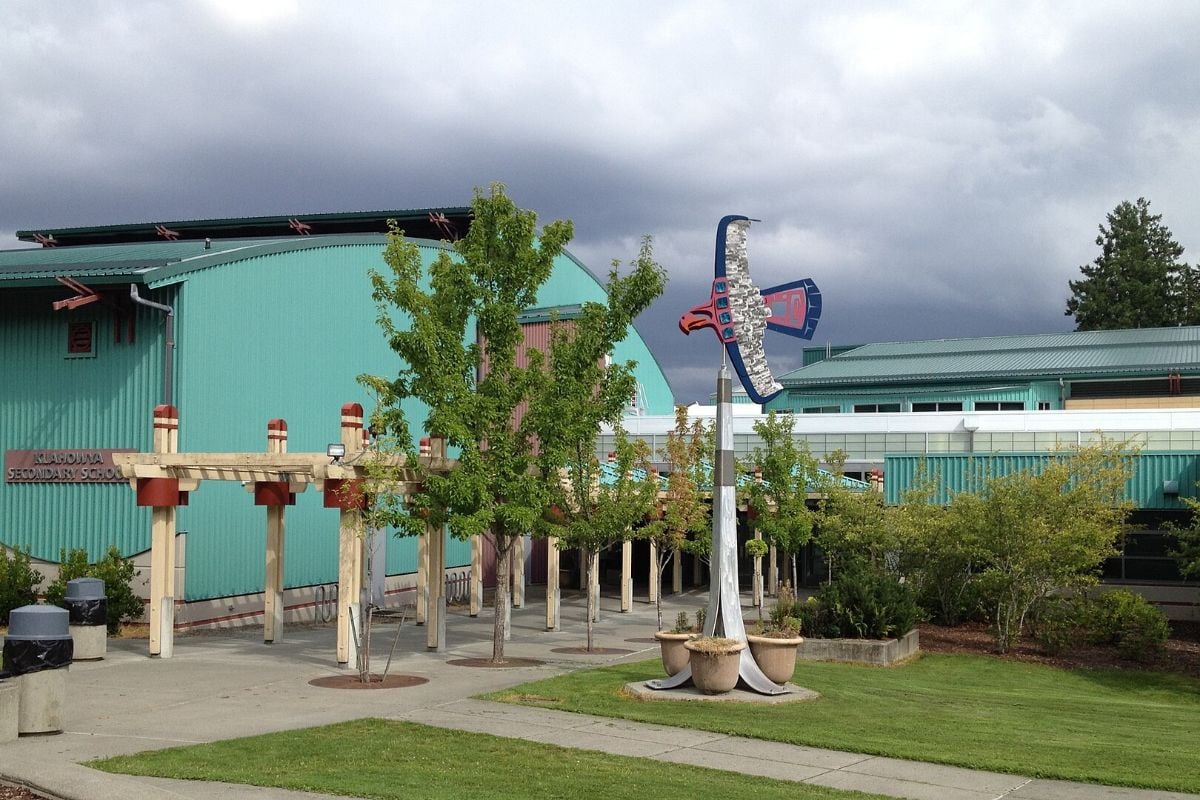
Klahowya sits quietly in Clallam County on the Olympic Peninsula, about 15 miles west of Port Angeles. This small unincorporated community offers genuine small-town living surrounded by Olympic National Forest.
The town’s name comes from the Chinook word meaning “greetings” or “welcome.” The residents continue this welcoming spirit today, creating a tight-knit community in this forested area.
Outdoor adventures begin right outside your door in Klahowya. The Olympic Discovery Trail passes through the area, giving direct access to hiking and biking routes that connect to the broader trail network.
Lake Crescent lies just minutes away. You can enjoy kayaking, fishing, and swimming in its crystal-clear waters.
The lake’s depth and pristine condition make it one of the peninsula’s most photographed destinations. The area’s proximity to Olympic National Park’s temperate rainforest adds to its appeal.
The Marymere Falls trail and other popular hiking spots are easily accessible for regular weekend outings. Residents often make these trails part of their routine.
Forestry, tourism, and small businesses drive the local economy. Many people commute to Port Angeles for jobs in government and healthcare.
The cost of living stays lower than in Washington’s urban centers. However, you will need to travel to Port Angeles for major grocery stores and medical facilities.
Internet connectivity has improved, making remote work more practical. Many newcomers enjoy combining natural beauty with flexible work arrangements.
The community maintains a volunteer fire department and relies on county services for most municipal needs. Neighbors often know each other, creating a strong sense of support and shared responsibility.
Where is Klahowya?
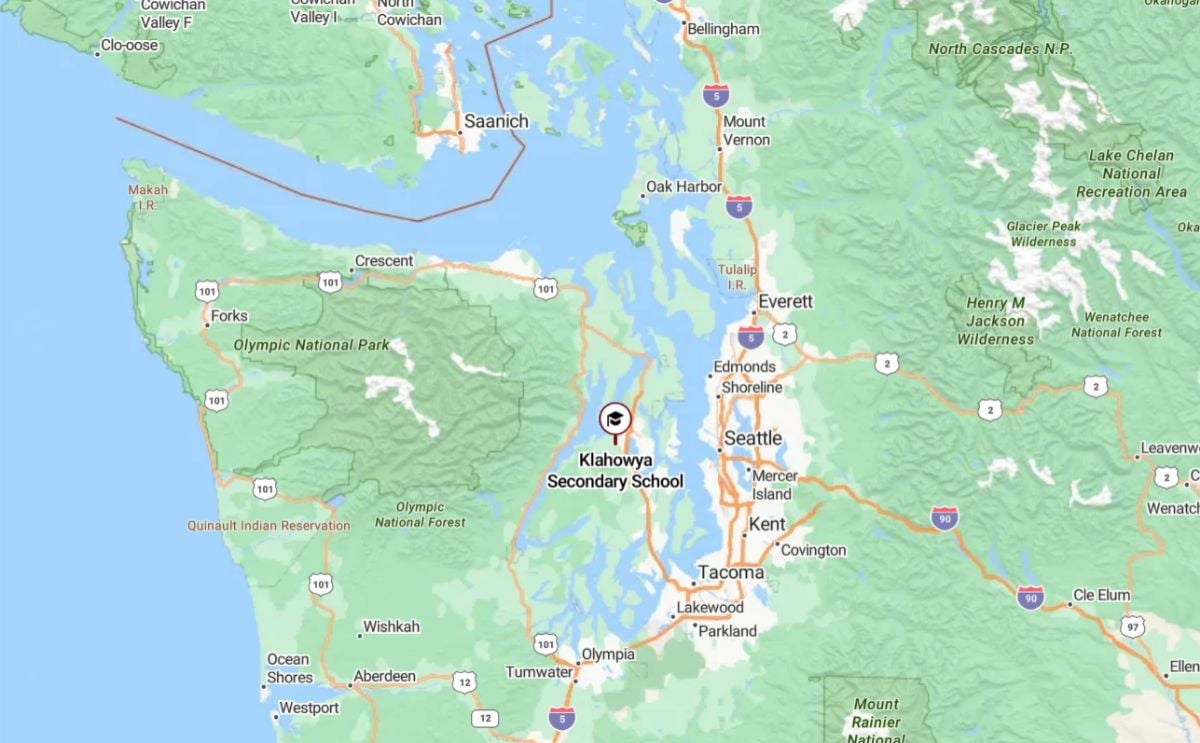
Klahowya typically refers to Klahowya Campground, located within the Olympic National Forest on the Olympic Peninsula. It sits along the Sol Duc River, about 20 miles northeast of Forks and 33 miles west of Port Angeles.
Surrounded by lush temperate rainforest, this area offers peaceful access to hiking trails, fishing spots, and nearby Olympic National Park.
22. Enumclaw
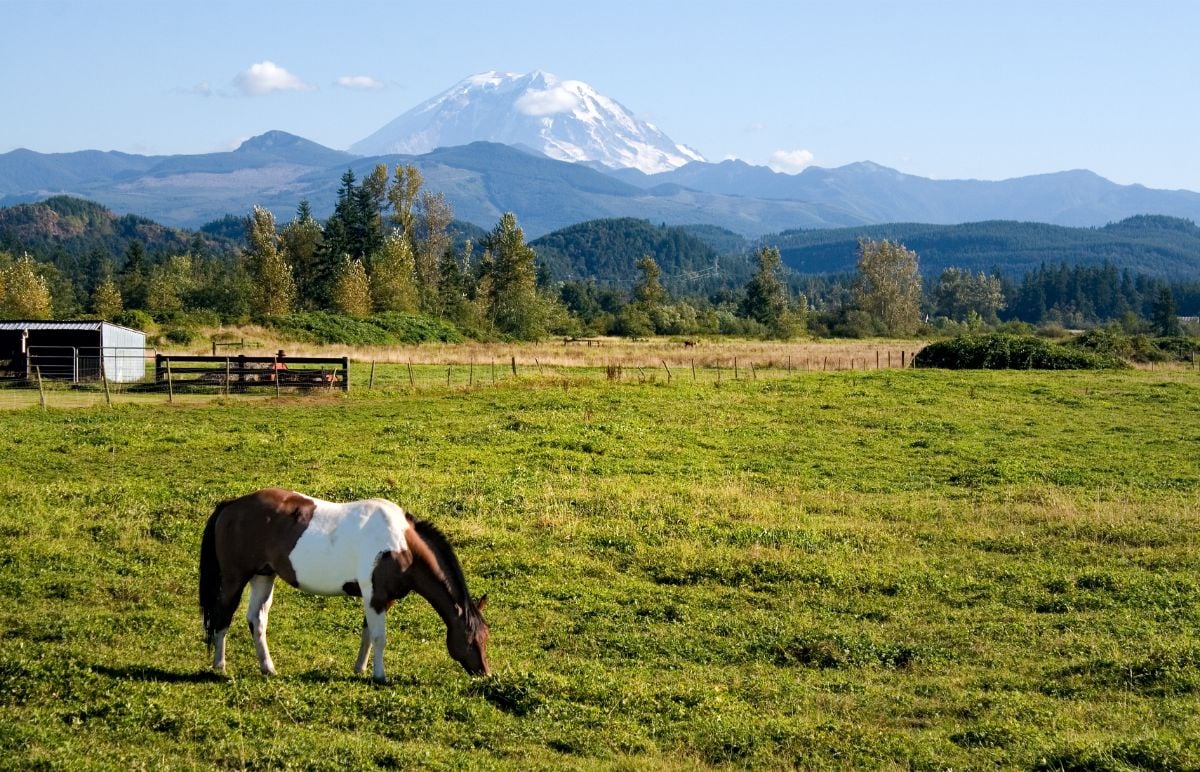
Enumclaw rests at the foot of Mount Rainier in Washington State. The town offers mountain views and easy access to outdoor recreation.
This charming town provides a peaceful small-town atmosphere just an hour southeast of Seattle. Mount Rainier National Park lies practically in your backyard, offering excellent hiking and camping opportunities.
Enumclaw serves as a gateway to trails, fishing spots, and scenic drives through the Cascade foothills. Agriculture drives much of the local economy, with dairy farming and livestock as major industries.
Forestry operations also contribute, and many residents commute to Seattle for work. The Enumclaw Expo Center hosts events throughout the year, including the Scottish Highland Games with Mount Rainier as a backdrop.
You can explore local shops, restaurants, and historical sites downtown. Housing costs remain more affordable than Seattle, while the town still offers good schools and family-friendly neighborhoods.
Neighbors know each other, and local businesses thrive. Enumclaw attracts those wanting rural living with urban job access, with a commute to Seattle taking about an hour.
The area experiences typical Pacific Northwest weather, with mild, wet winters and warm, dry summers.
Where is Enumclaw?
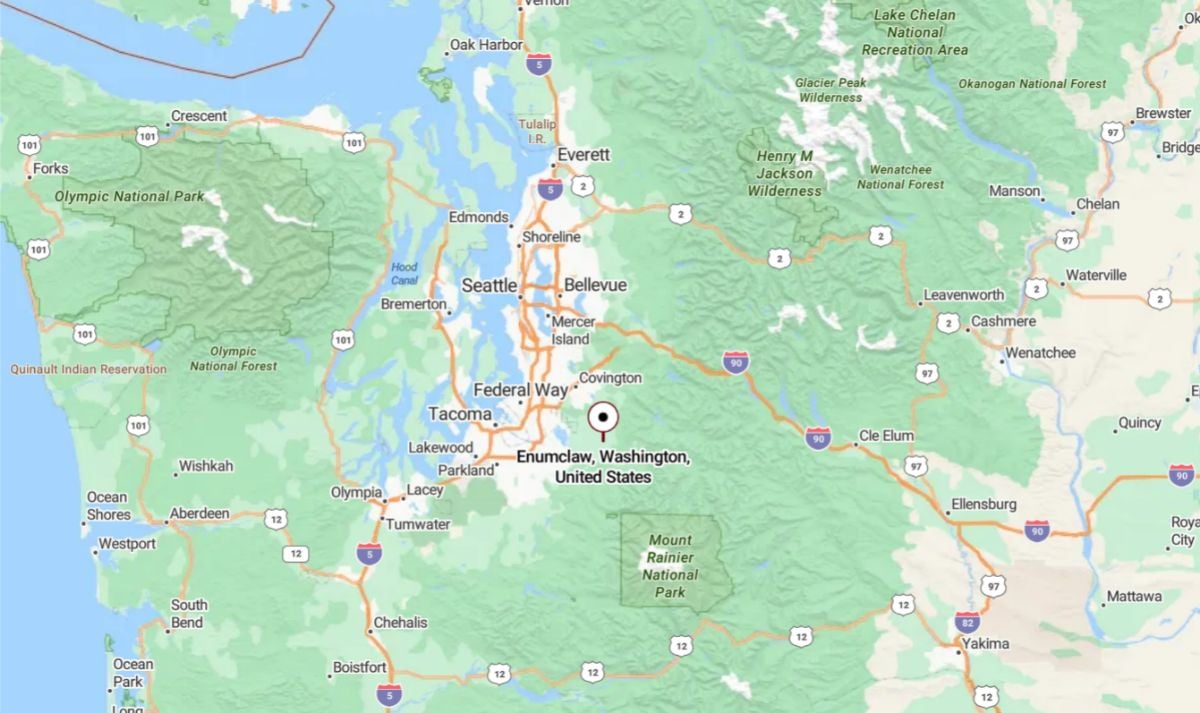
Enumclaw is a small city located in King County at the base of the Cascade foothills, southeast of Seattle. It lies on a plateau between the White River and the Green River, with Mount Rainier prominently visible to the southeast.
Known for its rural charm, equestrian culture, and access to outdoor recreation, Enumclaw serves as a gateway to Mount Rainier National Park and nearby wilderness areas.
21. Cle Elum
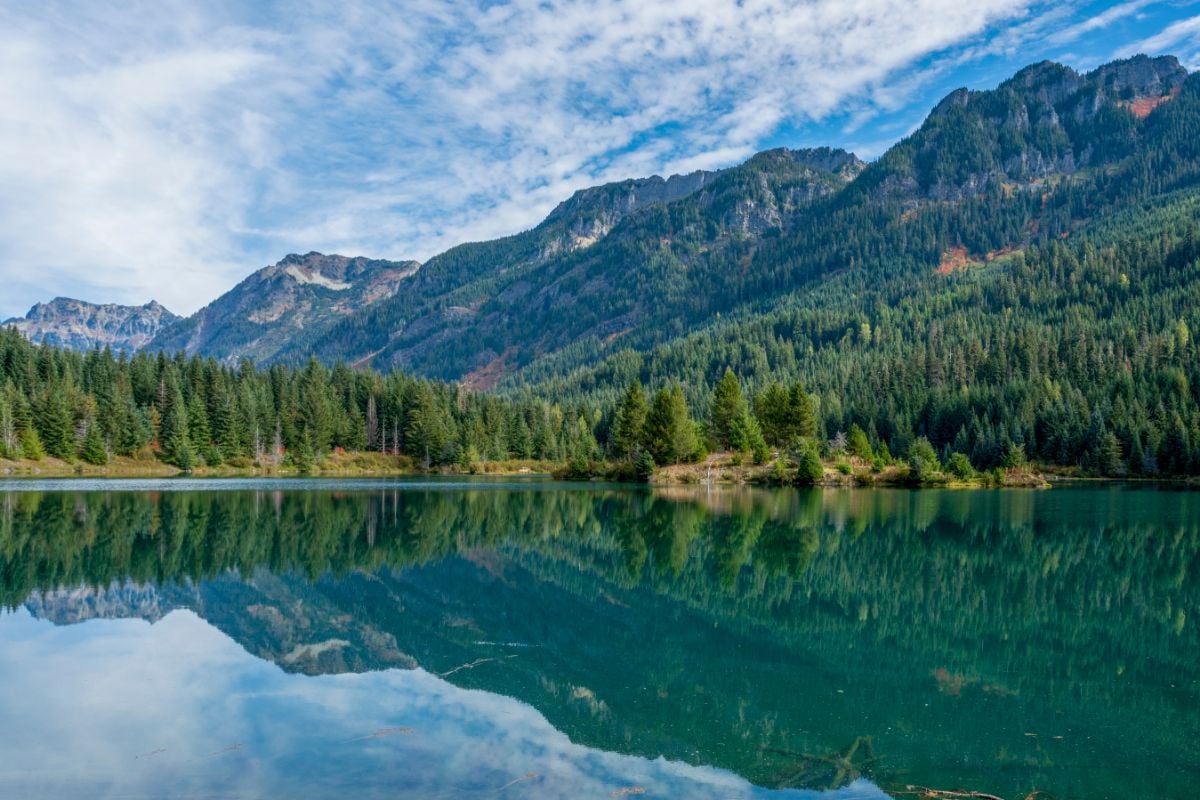
Cle Elum is nestled in Washington’s Cascade Mountains along Interstate 90, just before Snoqualmie Pass. This small town has about 2,000 residents and offers an authentic mountain community experience.
The location makes Cle Elum easily accessible from Seattle, about 90 minutes east. It is near Roslyn, and the scenic drive through the mountains provides beautiful views year-round.
Cle Elum’s economy once relied on coal mining and logging. Today, tourism and outdoor recreation drive much of the local economy.
The town benefits from its proximity to recreational areas and serves as a gateway to mountain adventures. You can enjoy hiking, mountain biking, and golfing on excellent trails for all skill levels.
Winter brings skiing and snowshoeing opportunities in nearby areas. Cle Elum also offers historical attractions for those interested in its mining heritage.
You can take guided tours of historic buildings and visit local museums. The preserved architecture tells the story of Cle Elum’s coal mining past.
Mike’s Tavern is a popular local spot for dining. The Cle Elum bakery offers fresh baked goods and has earned praise from visitors.
Local restaurants focus on hearty, mountain-style cuisine. The cost of living remains lower than in Seattle metropolitan areas.
Housing options range from historic homes to newer developments. The town provides essential services while keeping its small-town character.
Residents value outdoor recreation and mountain living. Seasonal events and festivals bring the community together.
Cle Elum’s proximity to wilderness areas and urban centers attracts remote workers. The town offers reliable internet and basic amenities.
You can enjoy mountain living while staying connected to larger cities when needed.
Where is Cle Elum?
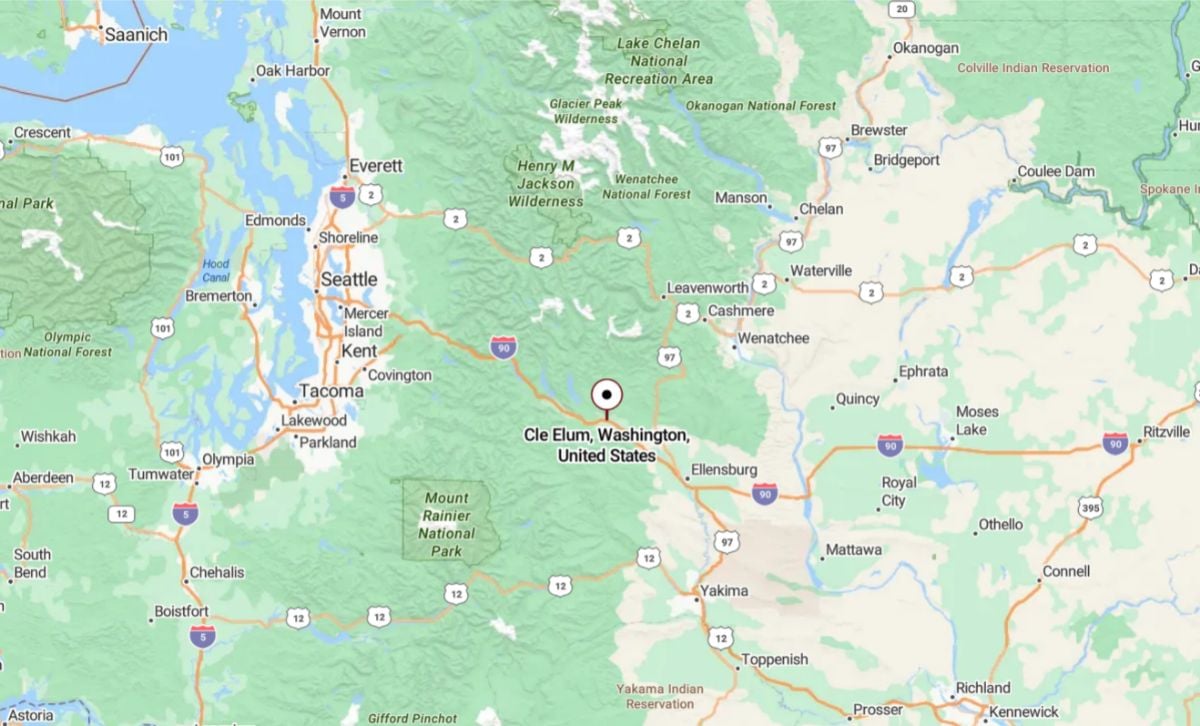
Cle Elum is a small city in Kittitas County, located just east of the Cascade Mountains along Interstate 90. It sits about 85 miles southeast of Seattle and is surrounded by forests, rivers, and mountain landscapes.
Known for its outdoor recreation opportunities, Cle Elum offers easy access to hiking, fishing, skiing, and snowmobiling, making it a popular year-round destination.
20. Bellingham
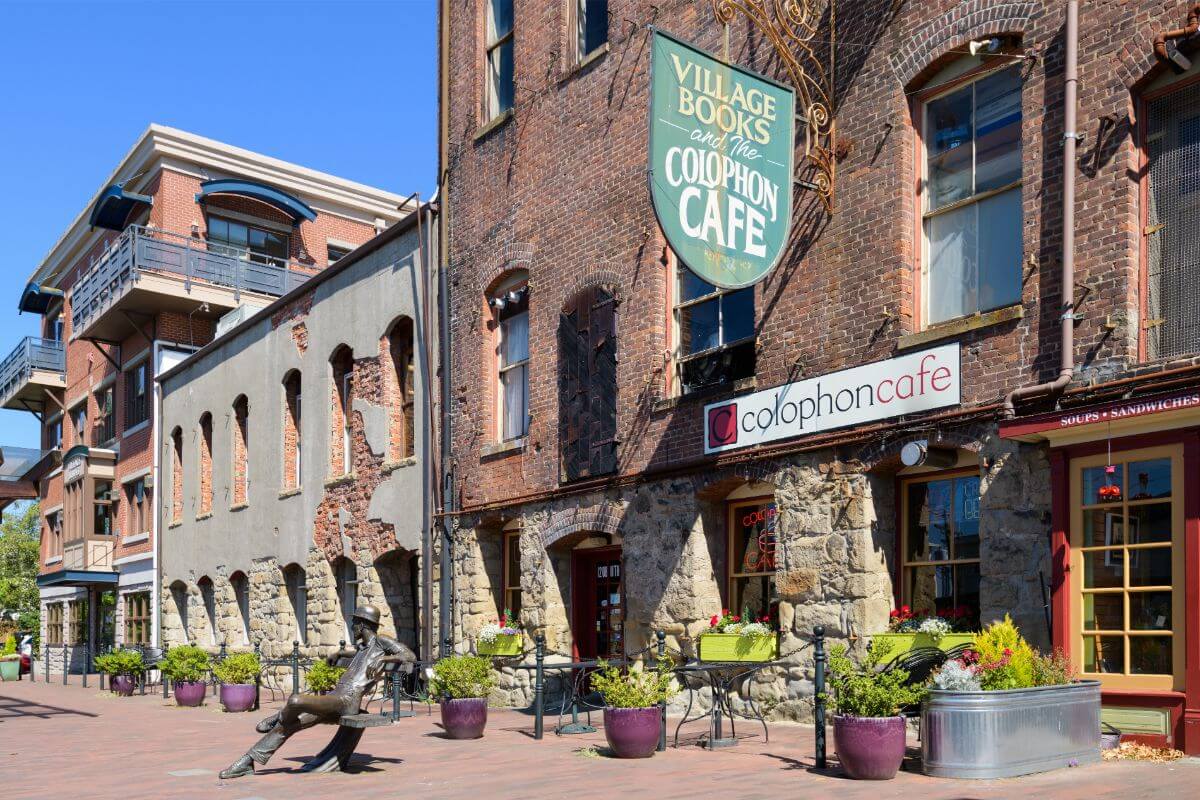
Bellingham is in northwestern Washington near the Canadian border. The city offers small-town charm and mid-size city amenities.
Bellingham lies between the Cascade Mountains and Puget Sound, giving access to diverse outdoor activities year-round. The city serves as a gateway to the San Juan Islands and features stunning waterfront views downtown.
Western Washington University anchors the local economy and brings vibrant energy to the community. The university creates jobs in education and supports local businesses and cultural activities.
Outdoor adventure options include hiking, kayaking, cycling, and sailing right from the city limits. Mount Baker’s ski slopes are about an hour away, while nearby islands offer world-class whale watching and boating.
The historic downtown district features local breweries, independent shops, and waterfront dining. Regular farmers markets, art galleries, and live music venues showcase the area’s creative spirit.
Bellingham’s cost of living is reasonable compared to Seattle or Vancouver. The city offers quality schools, healthcare, and public transportation while maintaining its small town character.
The marine industry and technology sector provide additional employment opportunities. Local businesses benefit from tourism while keeping the authentic Pacific Northwest atmosphere.
Where is Bellingham?
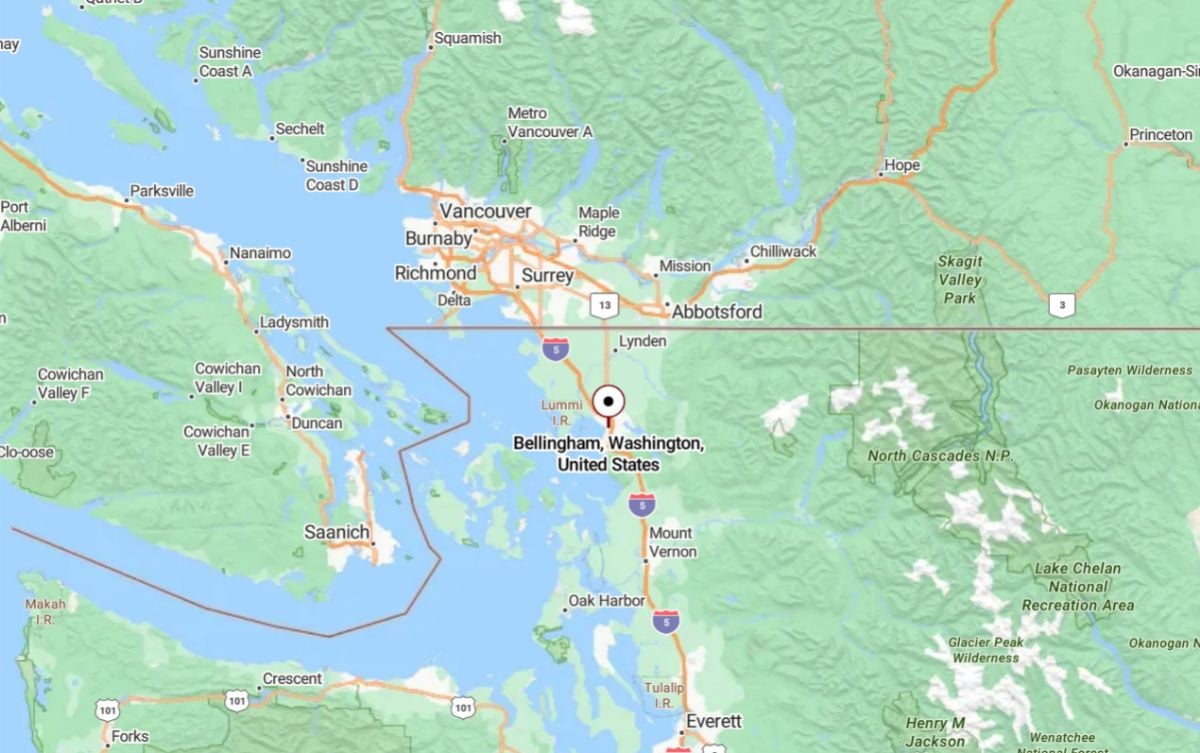
Bellingham is a coastal city in the northwestern corner of the state, located between Seattle and Vancouver, British Columbia. It sits on Bellingham Bay with the San Juan Islands to the west and Mount Baker rising to the east.
Known for its vibrant arts scene, access to outdoor activities, and as the home of Western Washington University, Bellingham offers a mix of urban culture and natural beauty.
19. Bainbridge Island
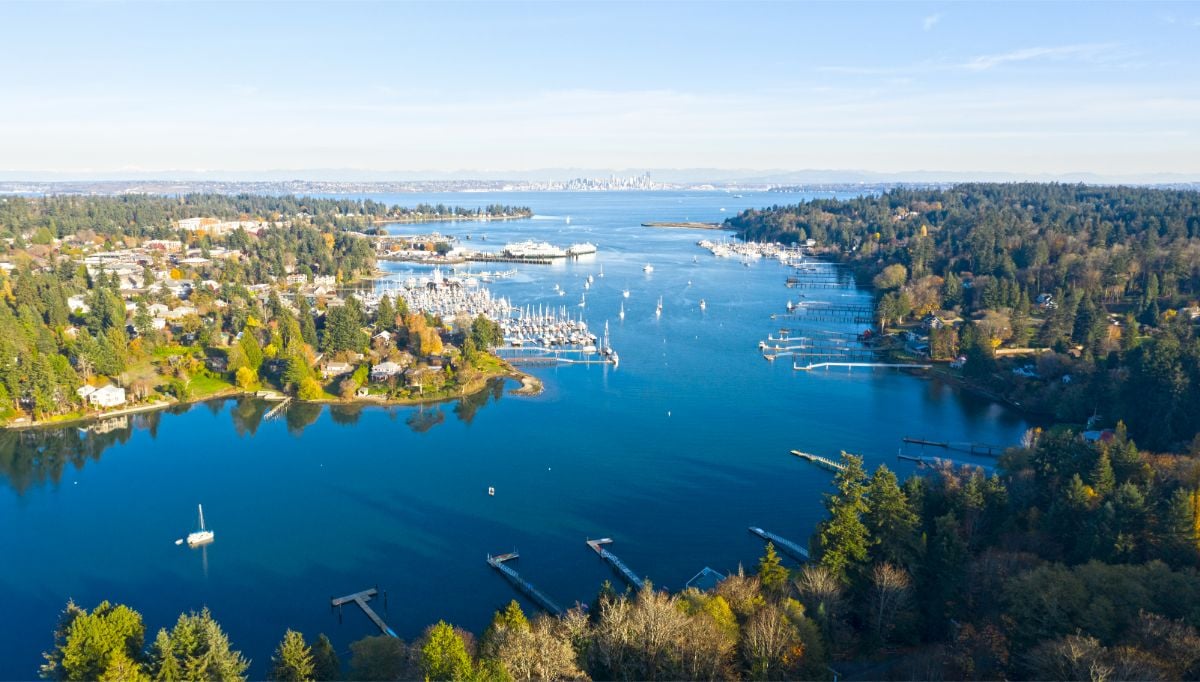
Bainbridge Island is just 30 minutes by ferry across Puget Sound from Seattle. The island offers natural beauty and small-town charm without the isolation of more remote locations.
Forests and wetlands create an ideal habitat for wildlife and native plants. You will find miles of walking trails, pristine beaches, and scenic viewpoints throughout the island.
Downtown Winslow serves as the island’s main hub, with walkable streets lined with shops, art galleries, and restaurants. The ferry terminal connects directly to this district, making car-free exploration easy.
Lynwood Center offers a quieter community with local businesses and stunning water views. This area attracts residents seeking a more secluded island experience while maintaining access to amenities.
Tourism, small retail businesses, and commuters to Seattle drive the local economy. Many residents enjoy living in a peaceful setting while keeping career connections to the city.
You can explore attractions like The Labyrinth Mosaic and Halls Hill Lookout for unique island experiences. These spots showcase the artistic community and natural beauty.
Housing options range from waterfront properties to forest homes, though prices reflect the island’s desirability. The community values environmental preservation and maintains strict development guidelines.
Ferry service runs frequently throughout the day, connecting to Seattle’s downtown core. This reliable transportation makes Bainbridge Island attractive for those seeking island living with access to urban amenities.
Where is Bainbridge Island?
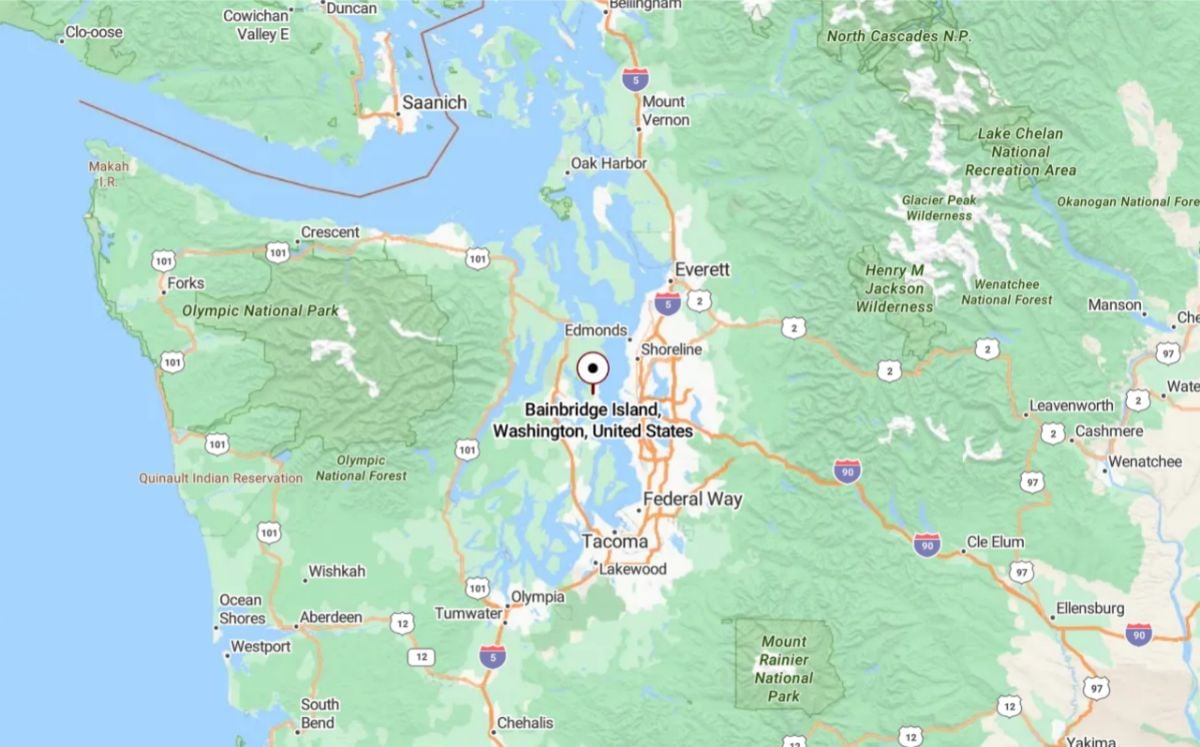
Bainbridge Island is located in Puget Sound, directly west of Seattle, and is accessible by a 35-minute ferry ride from downtown. The island features a mix of charming small-town communities, forested landscapes, and scenic shoreline views.
Known for its vibrant arts scene, quality schools, and peaceful residential feel, Bainbridge Island blends rural tranquility with convenient access to the city.
18. Ashford
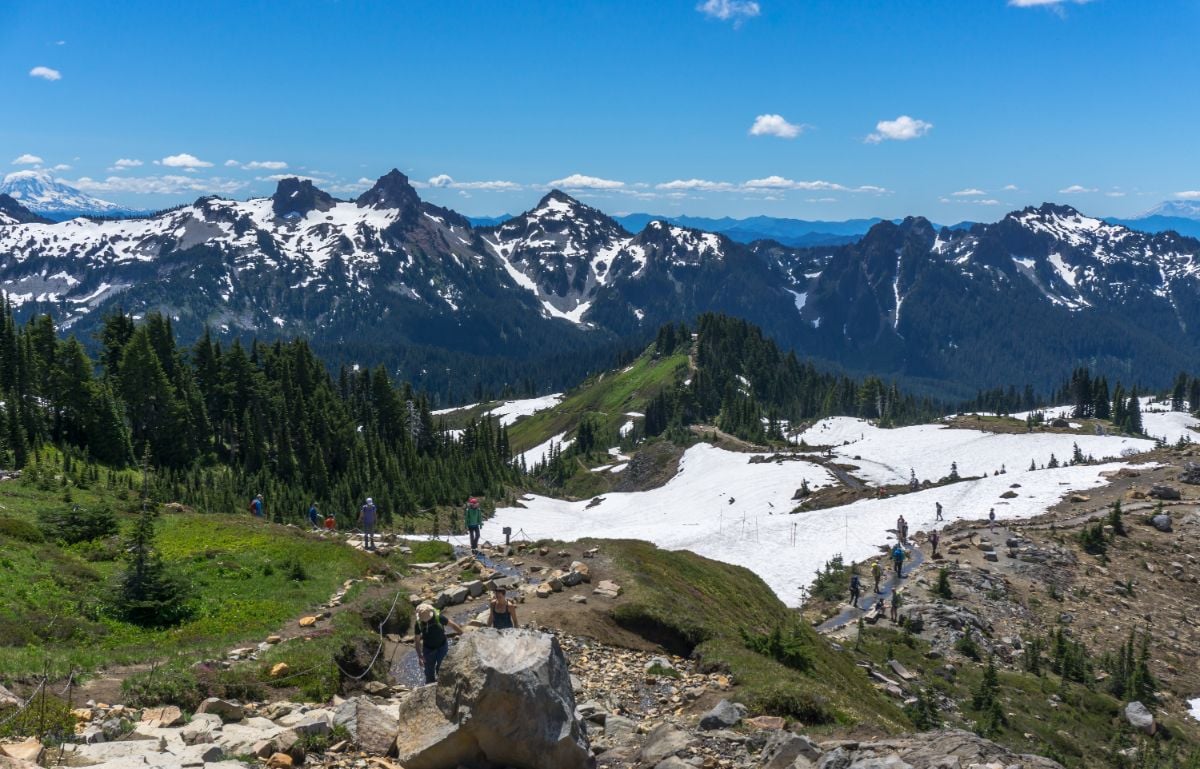
Ashford sits at the gateway to Mount Rainier National Park, making it an ideal base for exploring Washington’s iconic mountain. The town lies just five miles from the park’s Nisqually Entrance along State Route 706.
Ashford’s charm comes from its authentic mountain town atmosphere without the crowds of larger tourist destinations. The town serves as a quiet refuge where you can experience the Pacific Northwest’s natural beauty up close.
Mount Rainier dominates the landscape, offering world-class hiking, mountaineering, and photography opportunities. The park’s old-growth forests and wildflower meadows are easily accessible from town.
Tourism drives Ashford’s economy, with local businesses serving outdoor enthusiasts and park visitors. You will find cozy lodges, restaurants serving hearty mountain fare, and shops offering outdoor gear and crafts.
The town provides essential services while keeping its small-town character. Accommodations range from rustic cabins to comfortable bed-and-breakfasts, with dining options that fuel your adventures.
Ashford offers attractions and experiences that make it worth visiting. The town’s proximity to Mount Rainier creates year-round recreational opportunities, from summer hiking to winter snowshoeing.
The cost of living remains reasonable compared to urban areas, though job opportunities focus mainly on tourism and hospitality. The town attracts residents who prioritize outdoor recreation and a slower pace of life.
Where is Ashford?
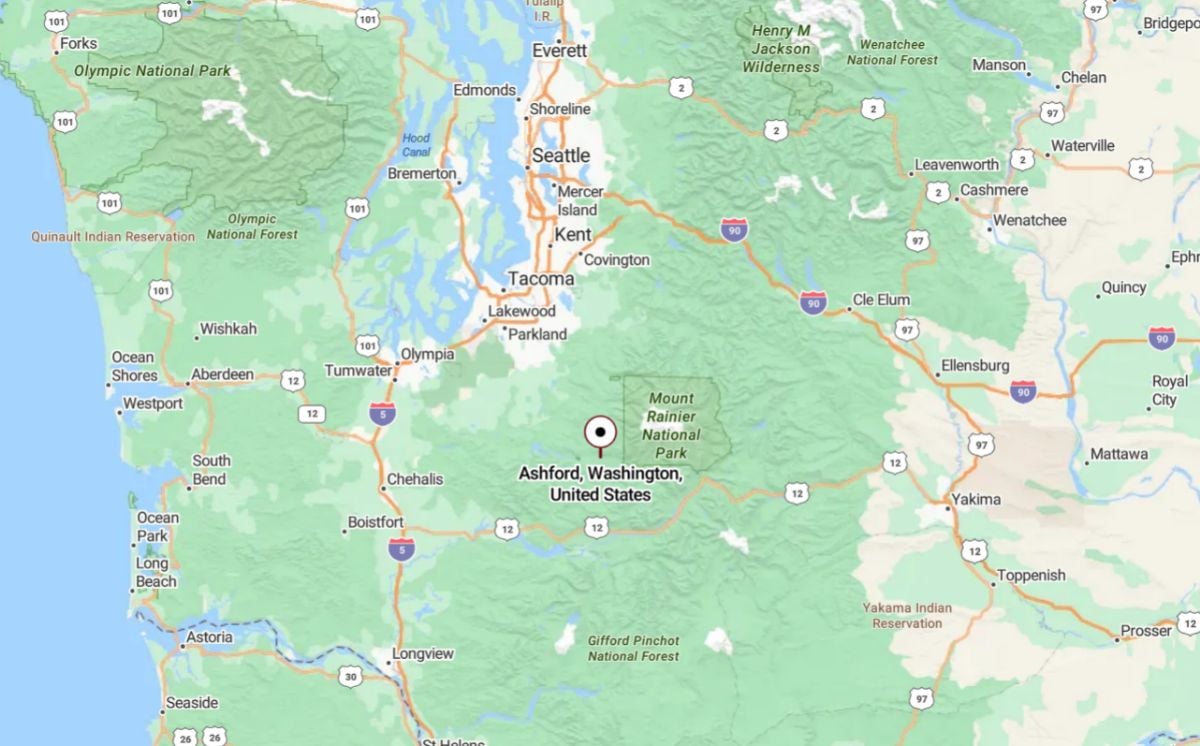
Ashford is a small community in Pierce County, located just west of the Nisqually Entrance to Mount Rainier National Park. It sits along the Nisqually River in a forested valley, about 85 miles southeast of Seattle via State Route 706.
Known as a gateway to the national park, Ashford offers lodging, dining, and outdoor access for visitors exploring the surrounding wilderness and mountain landscapes.
17. Custer
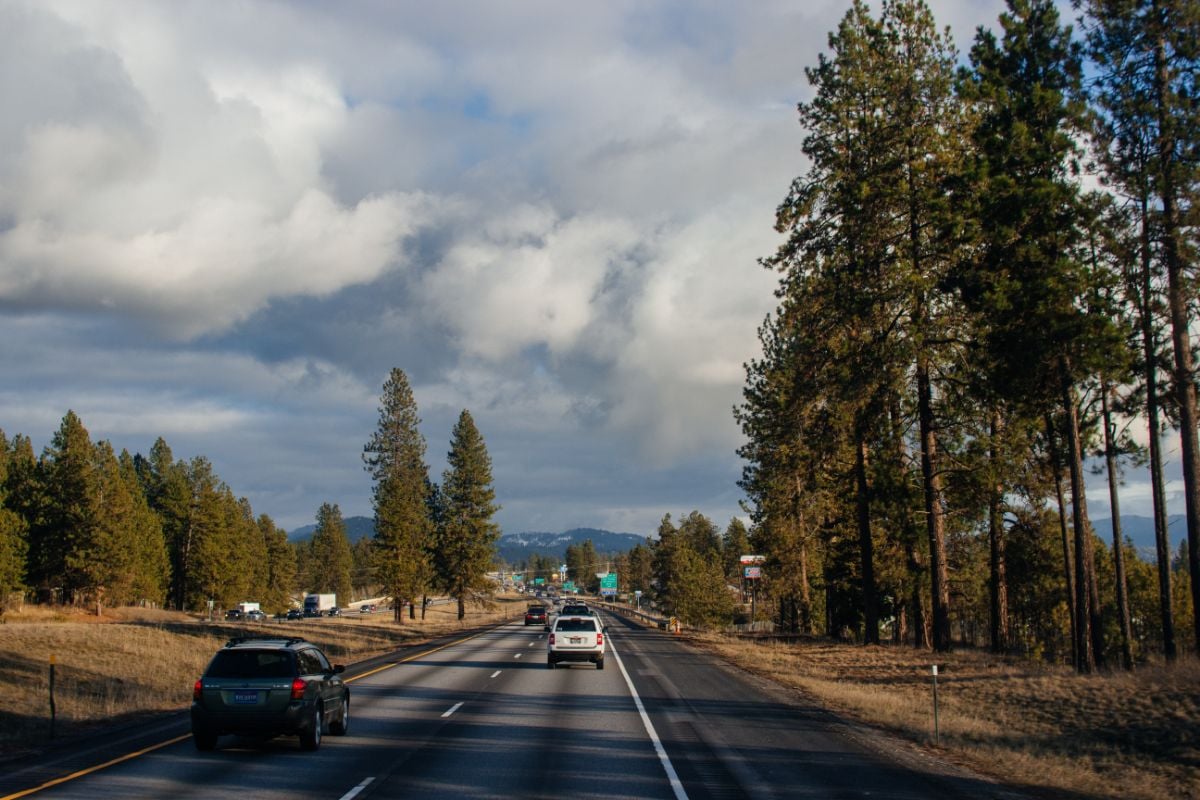
Custer is located in the far northwest corner of Washington, just miles from the Canadian border in Whatcom County. This tiny unincorporated community offers an authentic rural experience away from tourist crowds.
The town serves as a gateway to the North Cascades backcountry. You can access many hiking trails that lead into pristine wilderness areas and old-growth forests.
Custer’s location makes it ideal for cross-border exploration. You are well-positioned to visit both American and Canadian attractions on the same day.
The area attracts outdoor enthusiasts year-round. Winter brings snowshoeing and cross-country skiing, while summer offers hiking, fishing, and wildlife viewing.
Agriculture remains a key part of the local economy. Small farms and rural properties help maintain the area’s traditional character.
Housing costs stay relatively affordable compared to urban areas. The community appeals to those seeking privacy and space without leaving civilization behind.
Major services are in Sumas, about 15 minutes away. Bellingham provides more extensive shopping and medical facilities within a 45-minute drive.
The international border crossing at Sumas gives easy access to British Columbia. You can explore Vancouver or other Canadian destinations as day trips.
Custer offers a quiet lifestyle with minimal development restrictions. The area suits those who value independence and want to live close to nature.
Where is Custer?
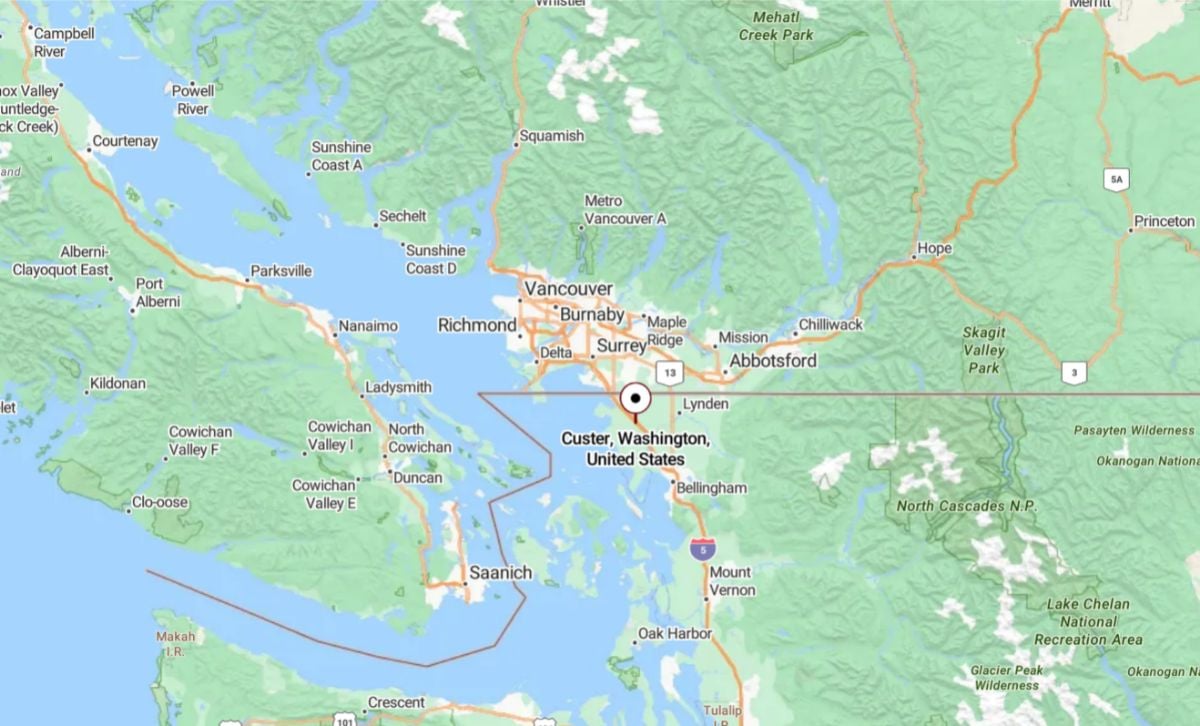
Custer is a small census-designated community in Whatcom County, situated just south of Birch Bay and roughly 10 miles inland from the Canadian border. It covers about 1.8 square miles at an elevation of around 40 feet and had a population of 518 in 2020.
Nestled along rural roads near the Pacific shoreline, it serves as a quiet residential area with local landmarks like the Custer Country Store and a small historical museum.
16. Tonasket
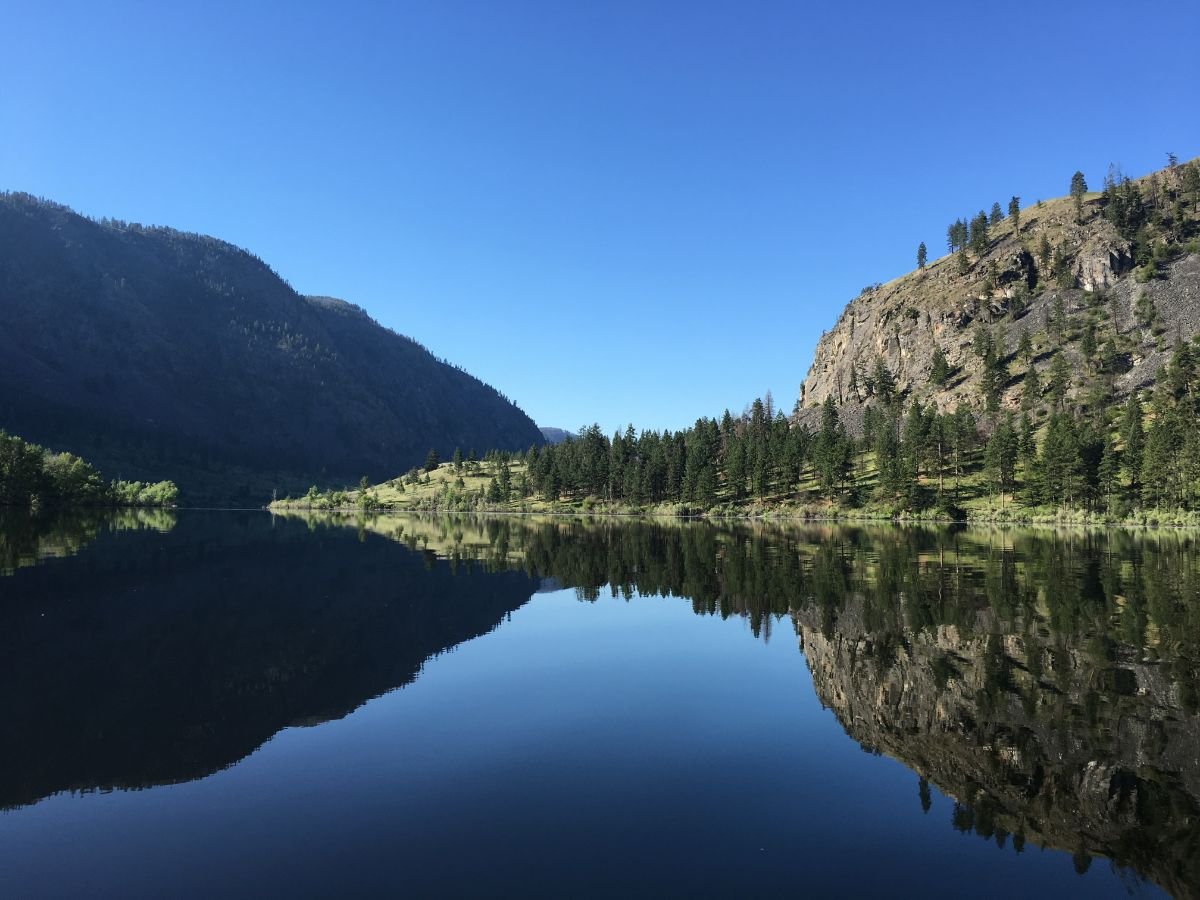
Tonasket is in north-central Washington’s Okanogan County, just 20 miles south of the Canadian border. Fewer than 1,000 residents call this small town home and enjoy an authentic rural Washington experience away from tourist crowds.
The town acts as a gateway to the Okanogan-Wenatchee National Forest. You can easily reach hiking trails, fishing spots, and camping areas.
Outdoor recreation is plentiful, including boating on nearby Spectacle Lake and exploring the surrounding mountains. Agriculture shapes Tonasket’s economy, with apple orchards, cattle ranching, and hay production leading local industry.
Farmers benefit from fertile soil and a favorable climate, making the area ideal for growing crops. Housing costs stay much lower than those in Washington’s urban centers, attracting retirees and people seeking affordable rural living.
The town provides essential services such as a hospital, grocery stores, and schools. Tonasket’s location also gives cross-border travelers easy access to British Columbia’s recreational opportunities.
Each year, residents celebrate Founder’s Day and strengthen community ties through local events and organizations. The area experiences a semi-arid climate with hot summers and cold winters, bringing distinct seasonal changes.
You’ll enjoy clear mountain air and expansive views of the Okanogan Valley in this peaceful corner of Washington.
Where is Tonasket?
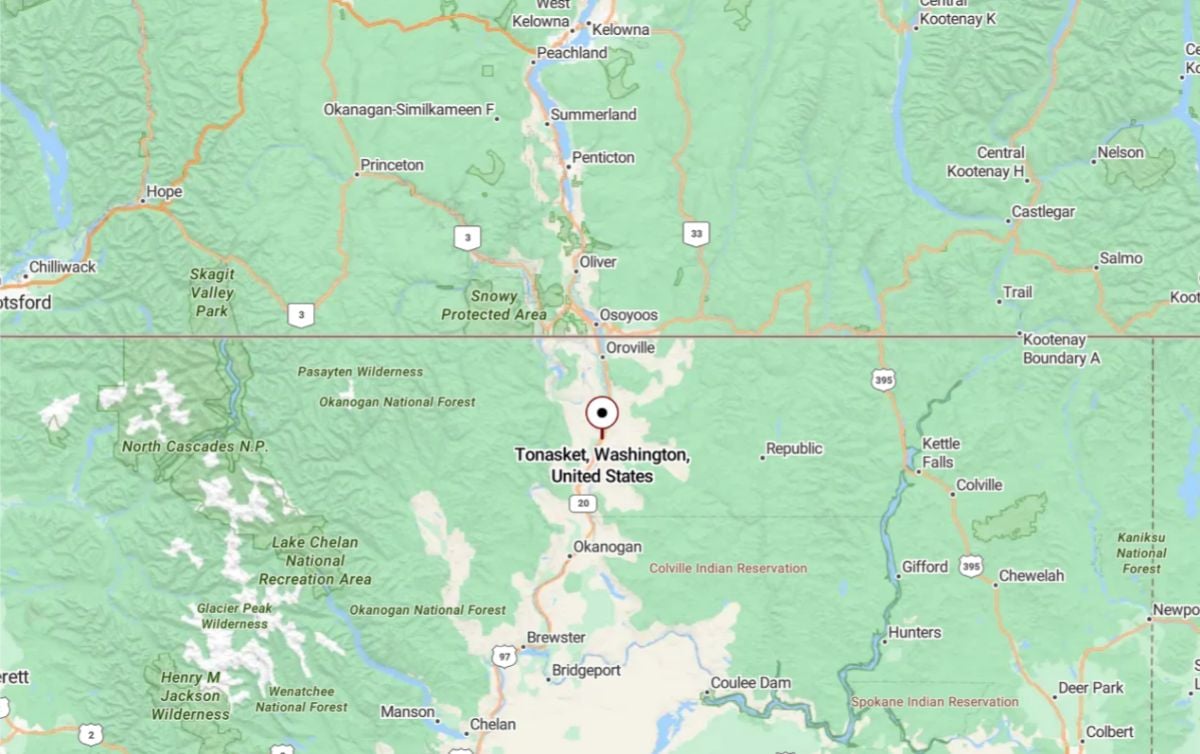
Tonasket is a small city in north-central Okanogan County, located along the Okanogan River and U.S. Highway 97, about 20 miles south of the Canadian border. It lies approximately 260 miles northeast of Seattle and sits at an elevation of around 1,120 feet.
Tonasket serves as a regional center for agriculture, forestry, and outdoor recreation, and is home to a ranger district for the nearby Colville National Forest.
15. Castle Rock
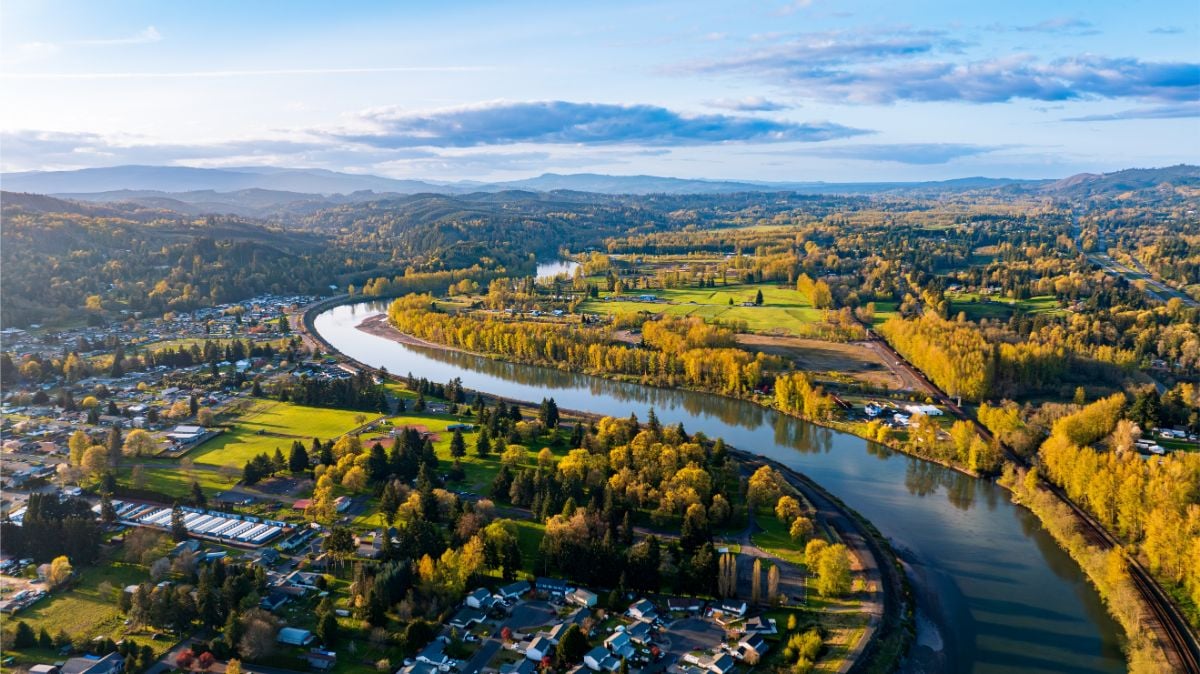
Castle Rock is in southwestern Washington along the Columbia River, located between Seattle and Portland. About 2,000 residents enjoy a blend of outdoor recreation and small-town charm.
The town’s proximity to Mount St. Helens makes it a gateway for volcano tourism and outdoor adventures. You’ll discover hiking trails to waterfalls and world-class fishing spots nearby.
Tourism, timber, and agriculture drive Castle Rock’s economy. The town maintains affordable housing costs compared to urban centers.
You can visit the Mount St. Helens National Volcanic Monument for educational tours and hiking. The Columbia River offers boating, fishing, and water sports.
Castle Rock provides outdoor fun and local attractions for families and retirees. The friendly atmosphere and scenic mountain views add to its appeal.
Downtown features local restaurants, shops, and community events that connect neighbors. The town supports schools, healthcare facilities, and municipal services.
Housing options include historic homes and newer developments, with property values remaining accessible for first-time buyers. Interstate 5 runs nearby, providing easy access to larger cities.
Castle Rock’s small size helps new residents feel part of the community quickly. Local festivals and events celebrate the area’s natural beauty and logging heritage.
Where is Castle Rock?

Castle Rock is a small city in Cowlitz County located along the Cowlitz River near the western foothills of Mount St. Helens. It sits just off Interstate 5, about 117 miles south of Seattle and 63 miles north of Portland, Oregon.
Often called the “Gateway to Mount St. Helens,” Castle Rock is known for its historic charm, riverfront trails, and proximity to outdoor adventures in the surrounding forests and volcanic terrain.
14. Mossyrock
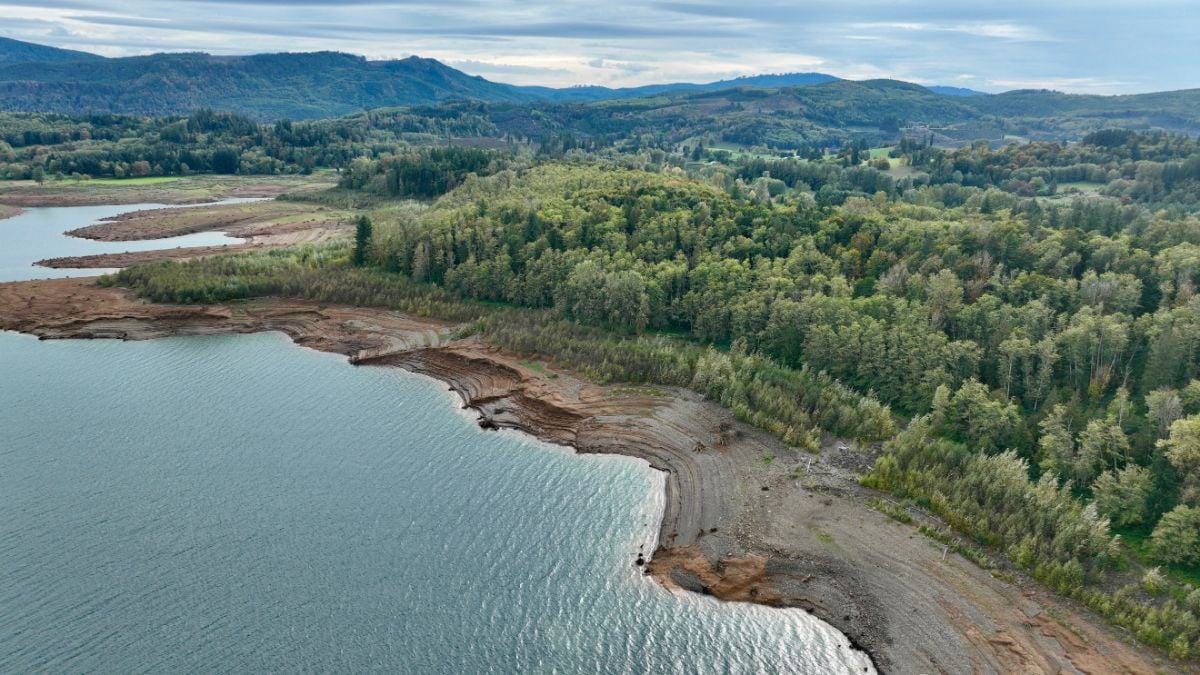
Mossyrock is located in Lewis County, Washington, about 20 miles east of Centralia along Highway 12. Fewer than 800 residents enjoy a quiet escape from urban life with access to outdoor recreation.
Nestled between rolling hills and forests, Mossyrock is an ideal base for exploring natural areas. The town lies near Mossyrock Dam, which creates Riffe Lake, a spot for fishing, boating, and swimming in warmer months.
Timber, agriculture, and small businesses drive the local economy. You’ll find a few shops and restaurants serving the community and travelers heading to Mount Rainier or the Cascades.
Mossyrock Park offers camping, boat launches, and picnic areas along the lake shore. The park gives direct access to water activities and hosts community events throughout the year.
Housing costs remain affordable compared to major metropolitan areas. Many homes come with larger lots, allowing space for gardens, workshops, or small livestock.
Each August, the town holds a Blueberry Festival with vendors, live music, and family activities. This event draws visitors and highlights Mossyrock’s agricultural heritage.
Outdoor lovers can visit the nearby Gifford Pinchot National Forest for hiking, hunting, and scenic drives. Mount Rainier National Park is within an hour’s drive, offering world-class mountaineering and hiking.
Highway 12 provides convenient access to Seattle and Portland, though each requires several hours of driving. Centralia offers closer shopping and daily services.
Where is Mossyrock?

Mossyrock is a small city in southwestern Lewis County, located near the Cowlitz River and nestled between Riffe Lake and Mayfield Lake. It sits about 120 miles southwest of Seattle and offers easy access to outdoor recreation in the surrounding forested hills and lakes.
Known for its small-town charm and rural roots, Mossyrock is popular for boating, camping, and the annual Blueberry Festival.
13. Bow
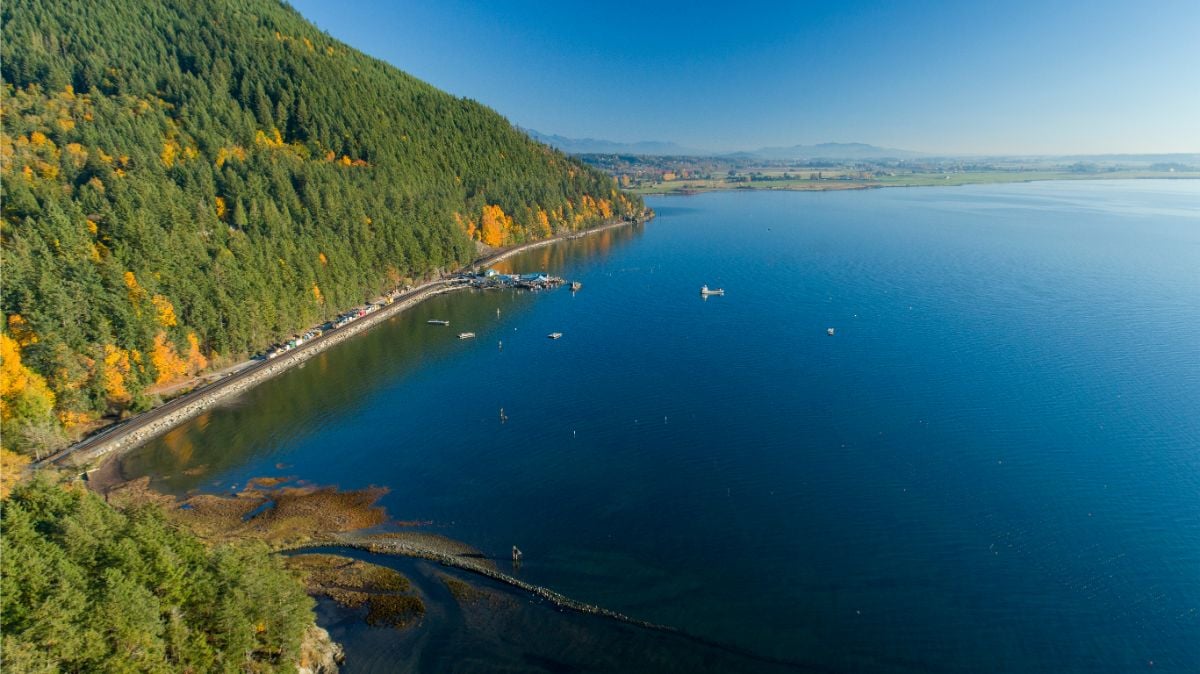
Bow sits in the Skagit Valley of northwestern Washington, about 20 miles east of Mount Vernon. Fewer than 500 residents enjoy rural charm surrounded by farmland and forested hills.
Bow sits along the Samish River, giving the town scenic waterfront views. The community keeps its agricultural roots and attracts visitors seeking quiet countryside experiences.
Bow Hill Blueberry Farm is a main attraction, letting you pick fresh berries in summer. The farm also sells produce at its on-site market.
Samish Bay offers kayaking, fishing, and birdwatching. You can explore the calm waters and watch for herons and eagles.
Berry farms, dairy operations, and small-scale farming shape Bow’s economy. Many residents commute to Mount Vernon or Bellingham for work.
Housing costs remain lower than in urban centers, appealing to those seeking affordable rural living. You’ll find farmhouses, newer homes, and small acreage properties.
Bow lacks major amenities like grocery stores or restaurants, so residents travel to Mount Vernon for most needs. This isolation appeals to people who prefer quiet, private living.
The town’s location makes it easy to reach the San Juan Islands and North Cascades National Park within an hour’s drive.
Where is Bow?
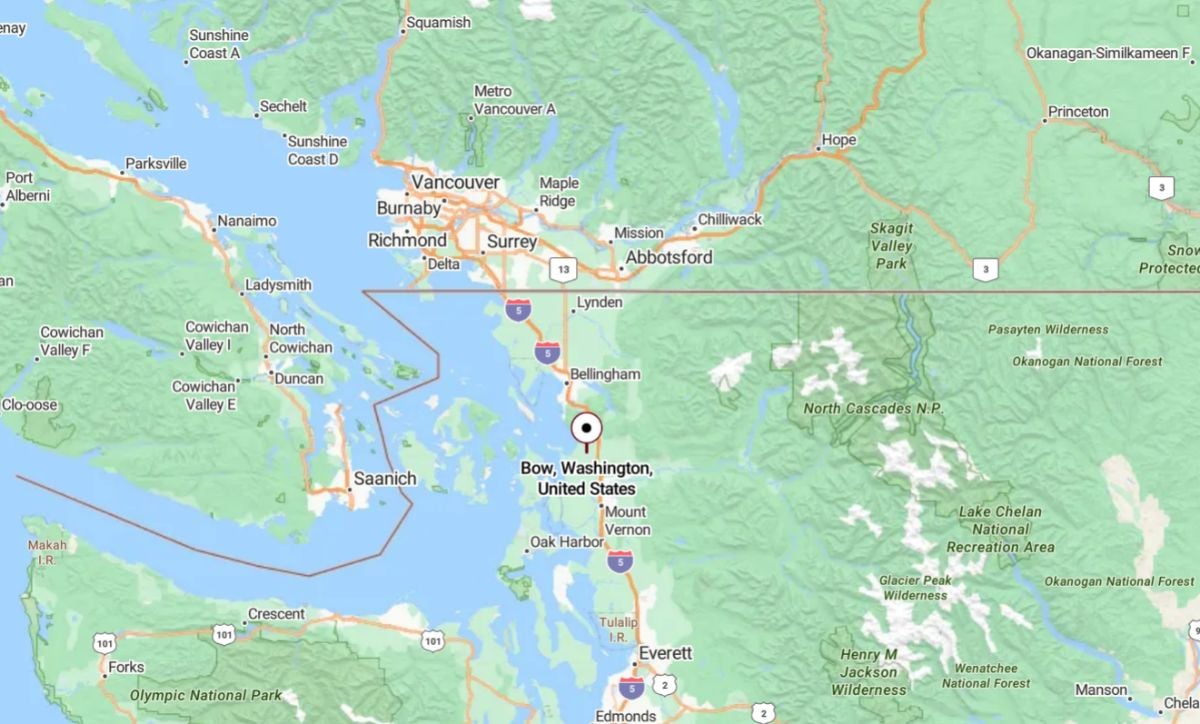
Bow is a small unincorporated community in Skagit County, perched on a hillside overlooking Samish Bay. It lies northwest of Burlington and Mount Vernon, just off scenic Chuckanut Drive at the foothills of Blanchard Mountain.
Known for its peaceful rural charm, Bow is home to a few local art galleries, a bakery, and easy access to waterfront parks and coastal trails.
12. Friday Harbor
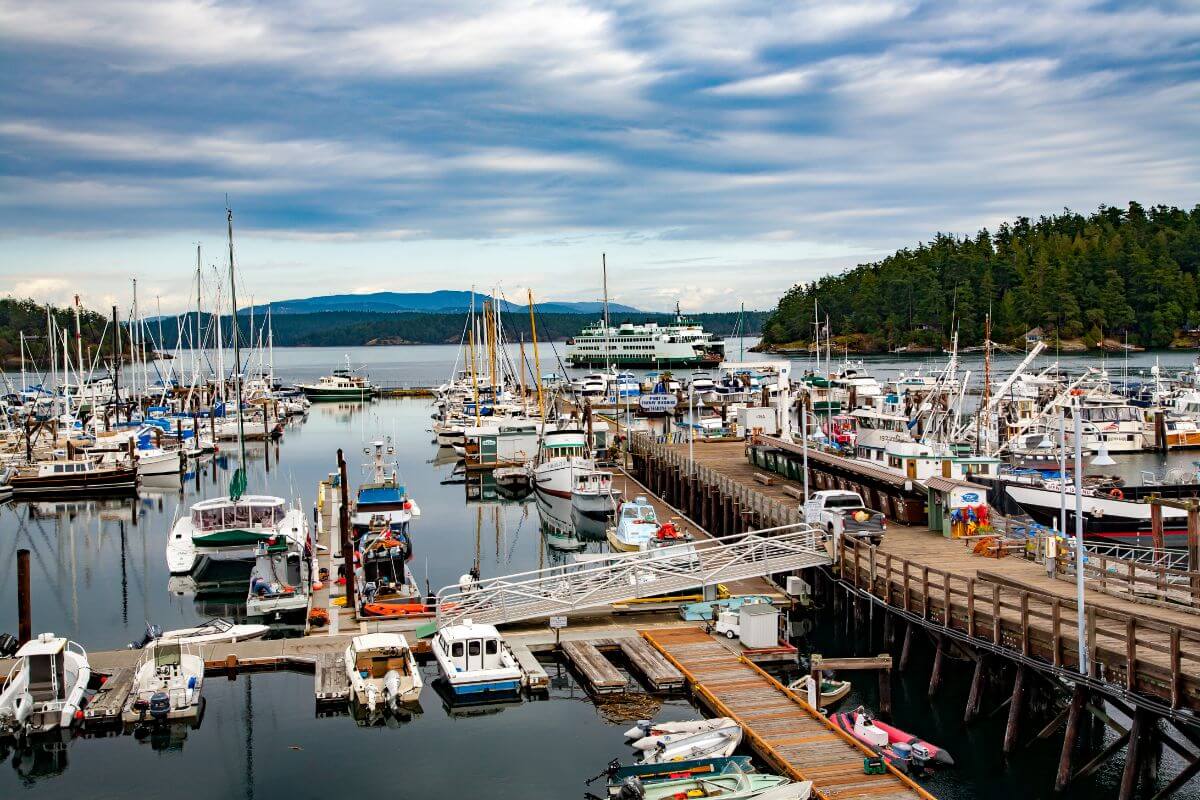
Friday Harbor is on San Juan Island and is accessible only by ferry or float plane from the mainland. This charming coastal town stands out as one of the Pacific Northwest’s most scenic yet underrated destinations.
Life here moves at a slower, island pace. The town blends natural beauty with small-town authenticity far from city crowds.
Tourism, marine services, and local agriculture fuel Friday Harbor’s economy. The town serves as the main hub for both visitors and residents of San Juan Island.
You can watch for orcas and breathe lavender-scented breezes throughout the area. The waters around the island offer some of the best whale watching in the Pacific Northwest.
Lime Kiln Point State Park, known locally as Whale Watch Park, provides excellent spots for seeing marine wildlife and ocean views. Cattle Point offers hiking trails and great opportunities for wildlife photography.
Friday Harbor’s restaurants feature fresh seafood and local ingredients. You’ll find eateries that use the island’s agricultural bounty and nearby waters.
The town has a walkable downtown with shops, galleries, and cafes. Ferry schedules help set a relaxed pace of life.
Housing costs are higher than on the mainland due to the island location and limited homes. Many residents work in tourism, marine services, or remote businesses.
You’ll need to plan around ferry schedules for trips to the mainland, but many find this rhythm appealing. The community is tight-knit and welcomes newcomers who enjoy the slower pace.
Where is Friday Harbor?
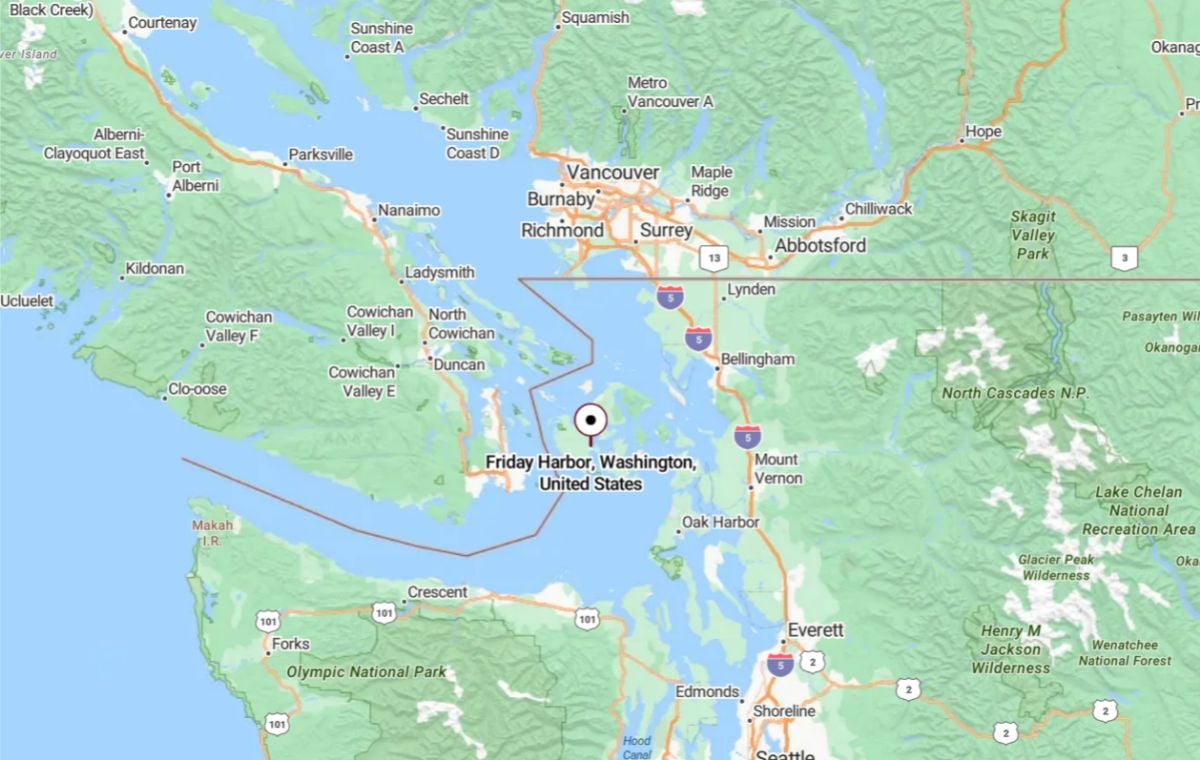
Friday Harbor is the primary town on San Juan Island, part of the San Juan Islands archipelago in Puget Sound, northwest of Seattle. It’s accessible by ferry or small aircraft from the mainland and sits on the island’s eastern shore, overlooking the harbor.
Known for its maritime charm, artsy village atmosphere, and whale‑watching excursions, Friday Harbor serves as a central hub for tourism and island life.
11. Snoqualmie
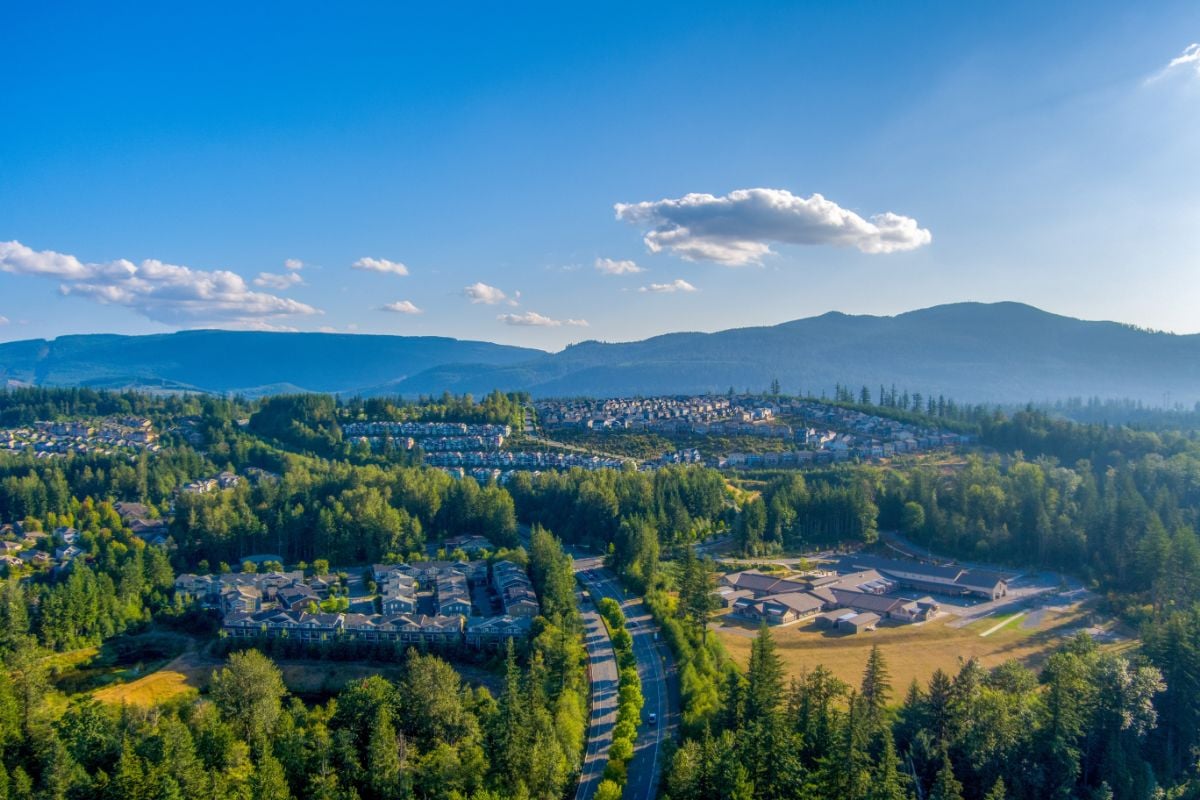
Snoqualmie is in the Cascade foothills, just 30 minutes east of Seattle. About 14,000 residents enjoy natural beauty and small-town charm in one of Washington’s most beautiful towns.
The 268-foot Snoqualmie Falls is the town’s crown jewel. You can view the waterfalls from observation decks and hiking trails.
The falls generate hydroelectric power and create a stunning backdrop for the town. Fans of the TV series Twin Peaks will recognize Snoqualmie, as many scenes were filmed here.
Twede’s Cafe, known as the Double R Diner, still serves coffee and pie to visitors. The town embraces its Hollywood connection while keeping its Pacific Northwest character.
Tourism, small businesses, and proximity to Seattle employers shape Snoqualmie’s economy. Many residents commute to Seattle but enjoy the slower pace at home.
The town offers excellent schools and family-friendly neighborhoods. Outdoor enthusiasts can explore the Snoqualmie Valley Trail for walking and biking.
You can visit the Northwest Railway Museum to see vintage trains and take seasonal rides through the valley. The walkable downtown features shops, restaurants, and cafes.
Housing ranges from historic homes to newer developments, with prices reflecting the area’s popularity. Residents enjoy a strong sense of community, with regular festivals and events.
Where is Snoqualmie?
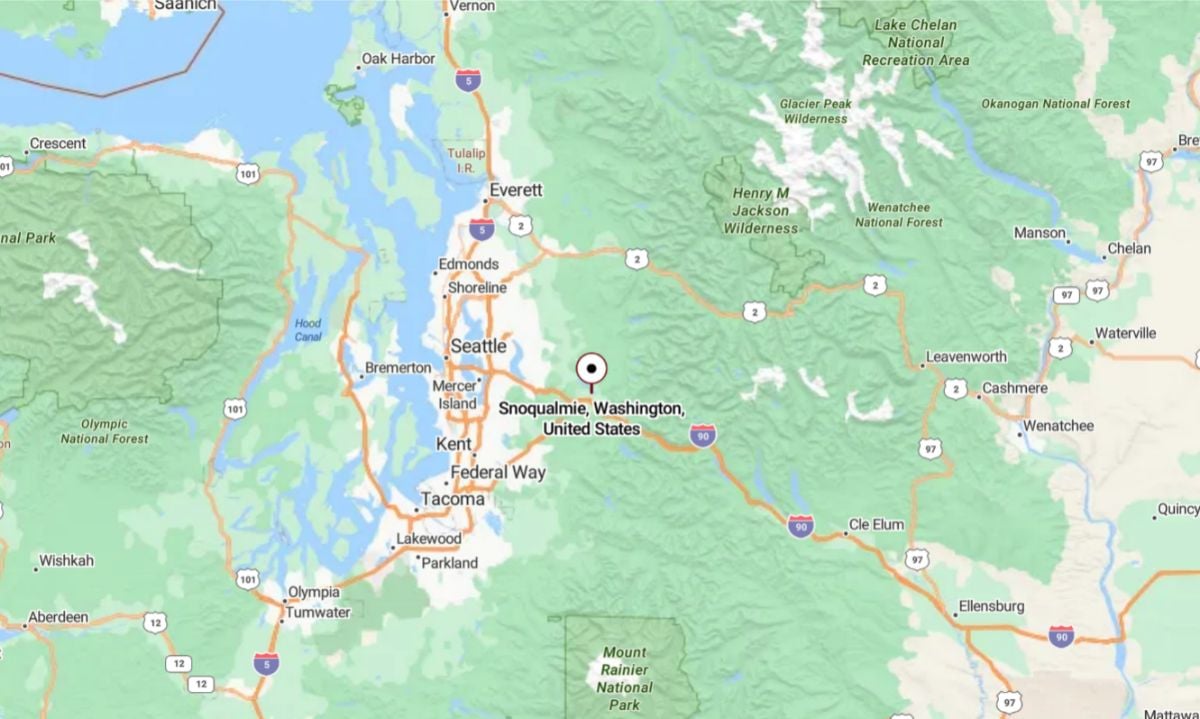
Snoqualmie is a city in King County located about 28 miles east of Seattle, nestled in the upper Snoqualmie Valley at the base of the Cascade Mountains. It is best known for Snoqualmie Falls, a dramatic 268-foot waterfall that attracts visitors year-round.
The city offers a mix of small-town charm, historic downtown attractions like the Northwest Railway Museum, and easy access to outdoor recreation, including hiking and skiing.
10. Langley
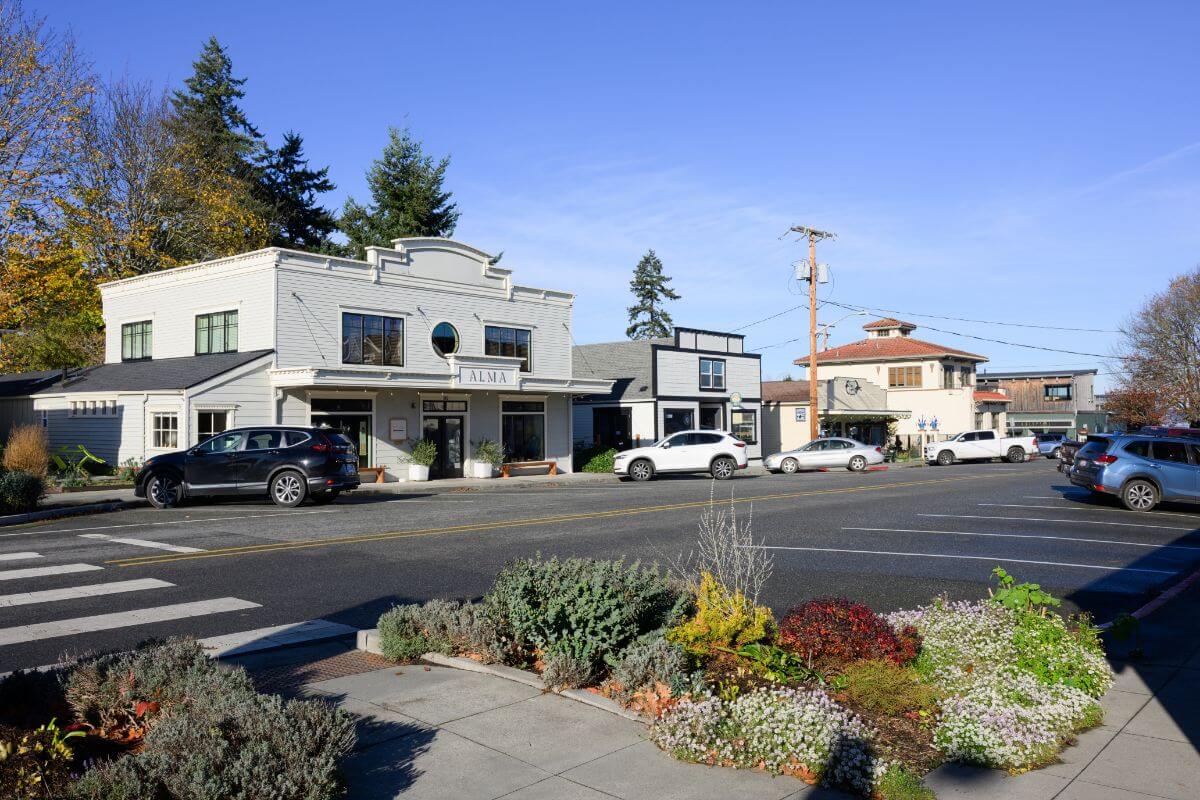
Langley is on the southern tip of Whidbey Island, offering views of the Puget Sound and Cascade Mountains. About 1,100 residents live in this artistic community, accessible by ferry from Mukilteo.
The town transforms into a “rural Bohemia” thanks to its vibrant arts scene. You’ll find galleries, studios, and unique shops lining the historic downtown.
Langley’s artistic spirit shines during the annual Choochokam arts festival, which has run for over 40 years. The town also hosts the popular Langley Mystery Weekend, a community-wide “whodunit” event.
Tourism, arts, and small businesses drive the local economy. Many residents commute to Seattle via ferry, while others work in hospitality or creative fields on the island.
You can stroll Seawall Park for waterfront views, visit the South Whidbey Historical Museum, or browse art galleries and boutiques. Downtown is walkable, making it easy to enjoy local attractions.
Langley offers diverse attractions and a welcoming community spirit. The slower pace attracts retirees and remote workers seeking a quieter lifestyle.
Housing costs are moderate compared to Seattle, though island living means higher ferry expenses for commuting. The close-knit community features excellent local dining, farmers markets, and year-round cultural events.
Where is Langley?
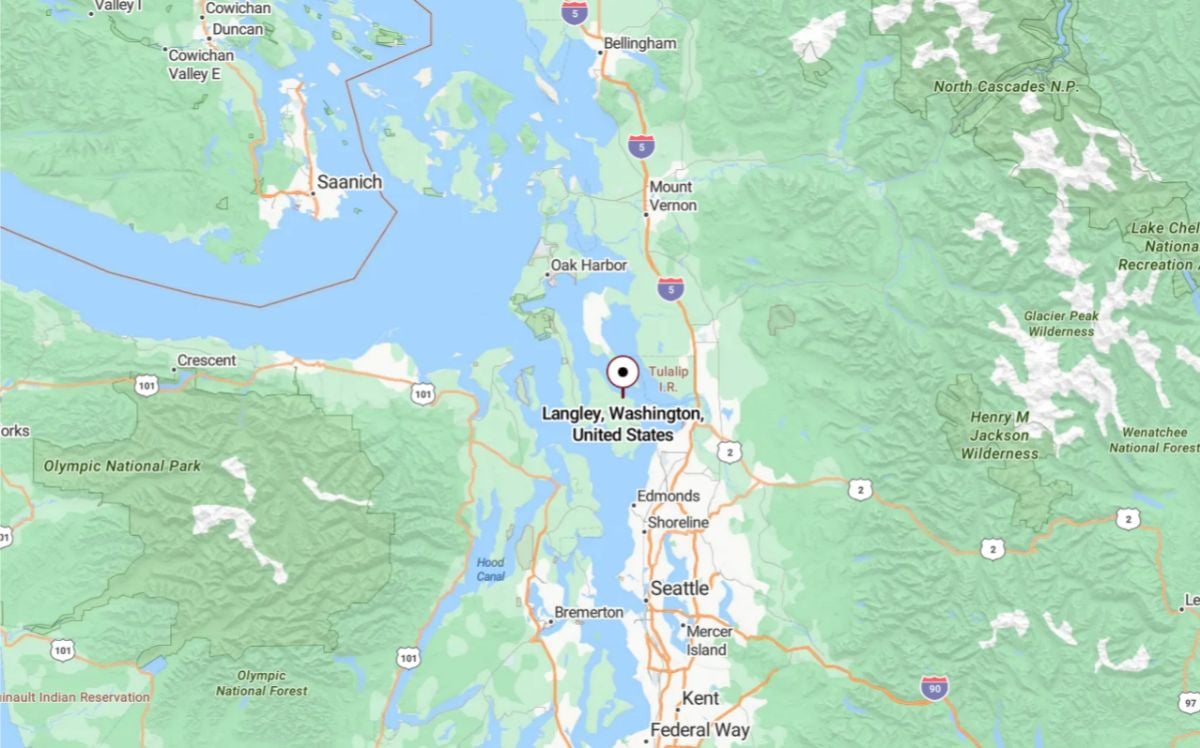
Langley is a charming small city located on the south end of Whidbey Island in Puget Sound, about a 55-minute ferry ride from Mukilteo and roughly 45 miles north of Seattle. Nestled along the shoreline, it features a walkable downtown lined with boutiques, galleries, and waterfront parks offering views of the Saratoga Passage.
Known for its artistic community and scenic coastal vibe, Langley is a popular weekend escape with easy access to biking, kayaking, and island exploration.
9. Duvall
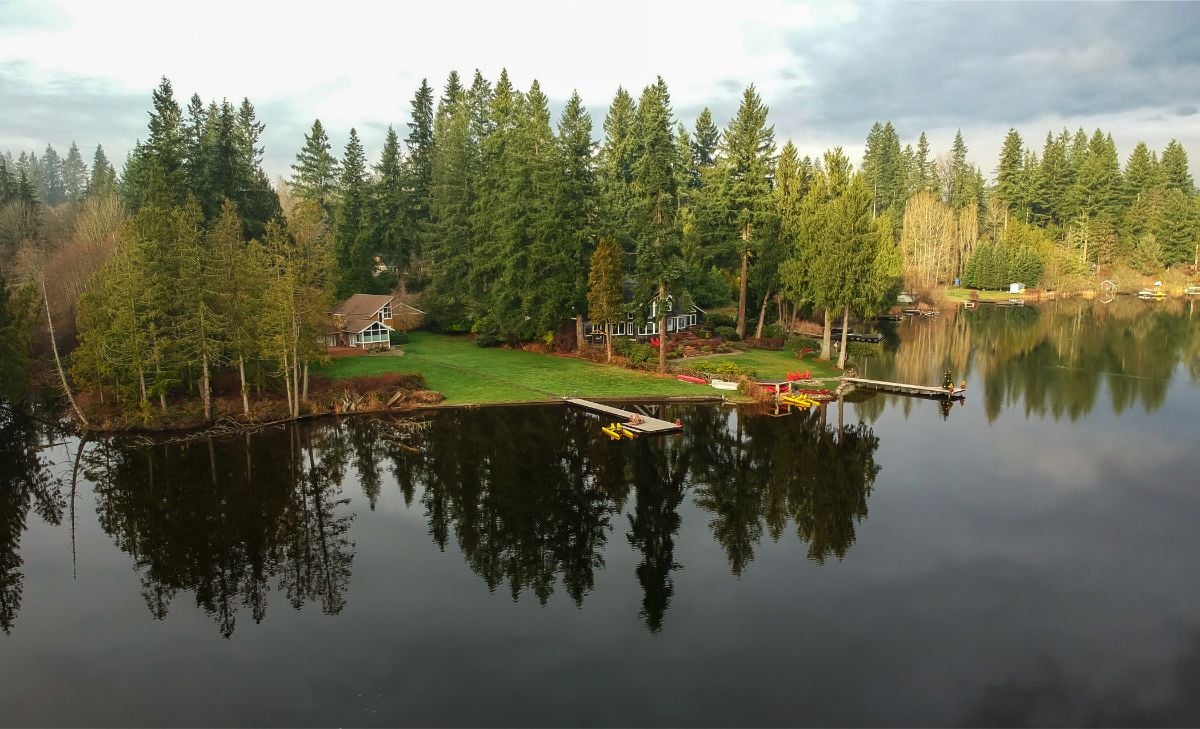
Duvall rests quietly in the Snoqualmie Valley, just 25 miles northeast of Seattle. This charming small town along the Snoqualmie River gives you a peaceful escape from city life with easy access to the Seattle area.
The town shines with a strong sense of community and natural beauty. You’ll see tree-lined streets, well-kept parks, and friendly neighbors who wave hello.
Agriculture shapes much of Duvall’s identity. You can visit local farms, shop at farmers markets, and enjoy the rural atmosphere.
Duvall offers many outdoor activities. The Snoqualmie River lets you fish, kayak, and walk along scenic paths.
Each summer, the Duvall River Days Festival brings everyone together with live music, local vendors, and family activities. This celebration highlights the town’s welcoming spirit.
Duvall maintains several parks such as Duvall Park and McCormick Park. These parks have playgrounds, sports fields, and picnic spots for families.
Housing costs in Duvall usually stay lower than Seattle, while still providing good schools and essential services. You’ll find both older homes with character and newer developments.
Commuting to Seattle takes about 45 minutes during busy hours via Highway 203 and Interstate 405. Many residents enjoy the balance between small-town life and urban job opportunities.
Local businesses include family-owned restaurants, specialty shops, and service providers. The downtown area keeps its historic charm while meeting modern needs.
Where is Duvall?
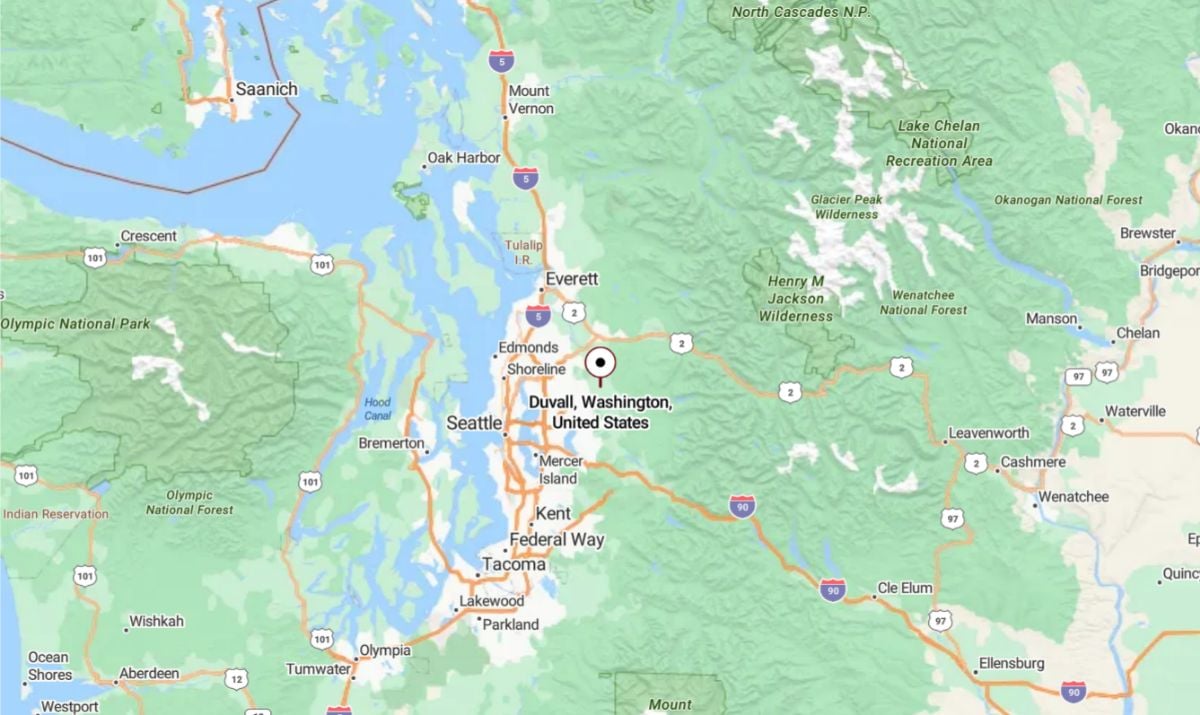
Duvall is a small city in King County situated along the Snoqualmie River, about 20 miles northeast of downtown Seattle. Nestled in the Snoqualmie Valley foothills, it blends rural character with easy access to urban centers via nearby Highway 203 and Interstate 90.
Known for its historic downtown, local farms, and riverside parks, Duvall offers a charming small-town atmosphere amid lush, river-veiled landscapes.
8. Ellensburg
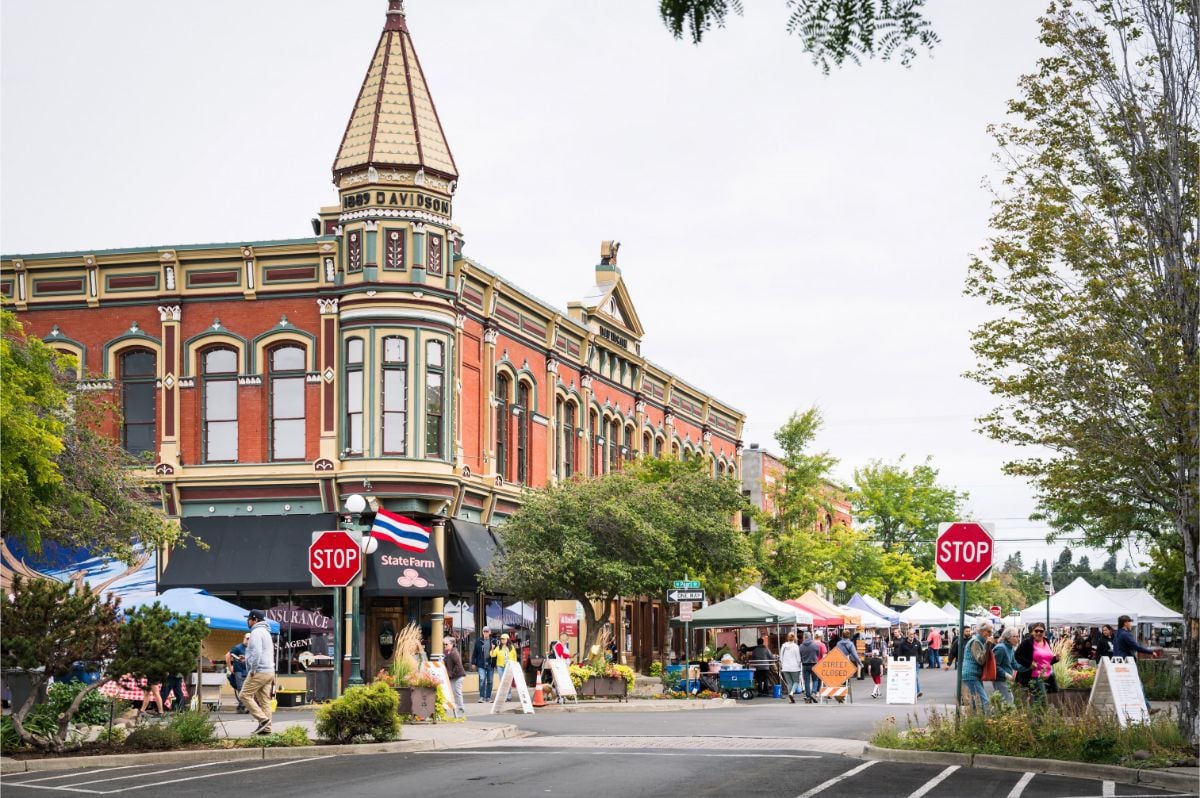
Ellensburg is located in the center of Washington State, just two hours east of Seattle along Interstate 90. This college town of about 20,000 people blends the best of both Western and Eastern Washington.
The National Trust for Historic Preservation recognized Ellensburg as one of its Dozen Distinctive Destinations. You’ll see stunning mountain views and a lively downtown that celebrate the area’s rich history.
Central Washington University shapes much of Ellensburg’s economy and brings youthful energy. The university provides steady jobs and cultural opportunities not often found in smaller rural towns.
Outdoor lovers can hike, bike, and fish on the Yakima River. The Cascade Mountains nearby offer endless recreation options.
The Ellensburg Rodeo has taken place since 1923 and is the largest rodeo in Washington State. This event draws visitors from across the Pacific Northwest each Labor Day weekend.
Downtown Ellensburg hosts the Winterhop Brewfest each January. You can sample beers from over 21 microbreweries in historic downtown buildings.
The town offers more than 27 activities from historical sites to natural attractions. Art galleries, museums, and local shops reflect the town’s creative spirit.
Housing costs stay reasonable compared to Western Washington cities. The mix of university jobs, outdoor activities, and small-town charm attracts both young professionals and families.
Where is Ellensburg?
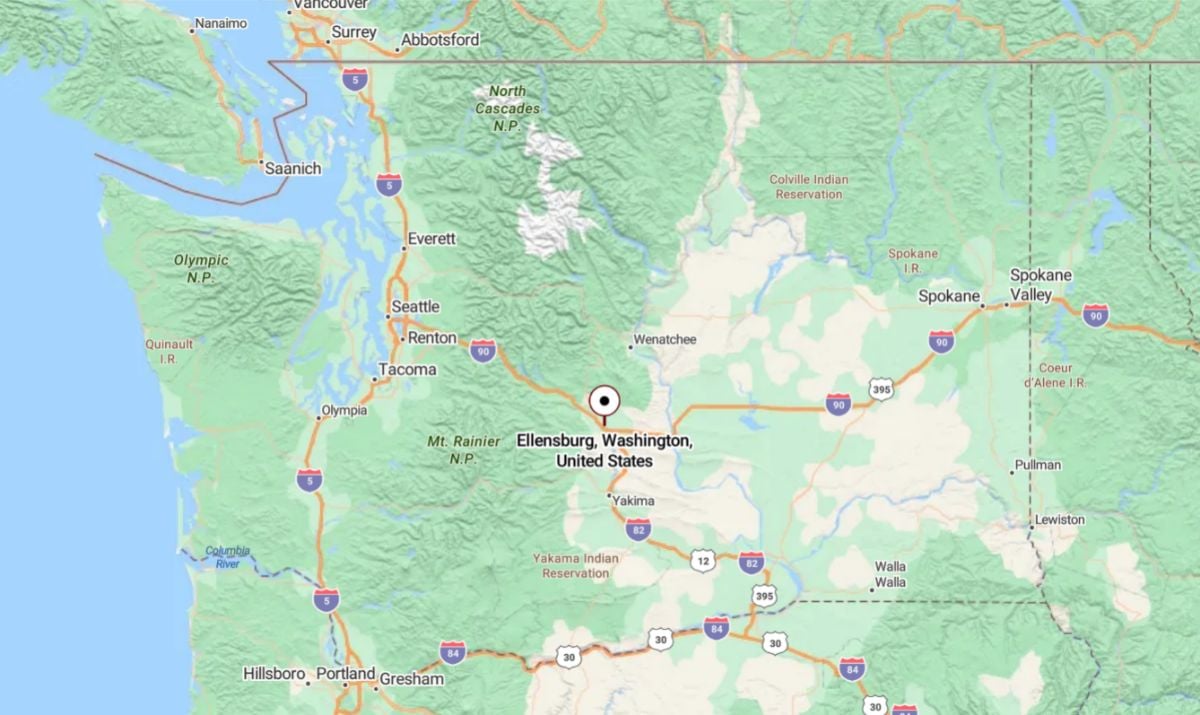
Ellensburg is a city in central Washington located in Kittitas County, roughly 115 miles southeast of Seattle. Nestled in a high desert valley at the foothills of the Cascade Mountains, it sits along the Yakima River and Interstate 90.
Known for its historic downtown, annual county fair, and as the home of Central Washington University, Ellensburg blends small-town charm with a vibrant cultural and outdoor lifestyle.
7. Concrete
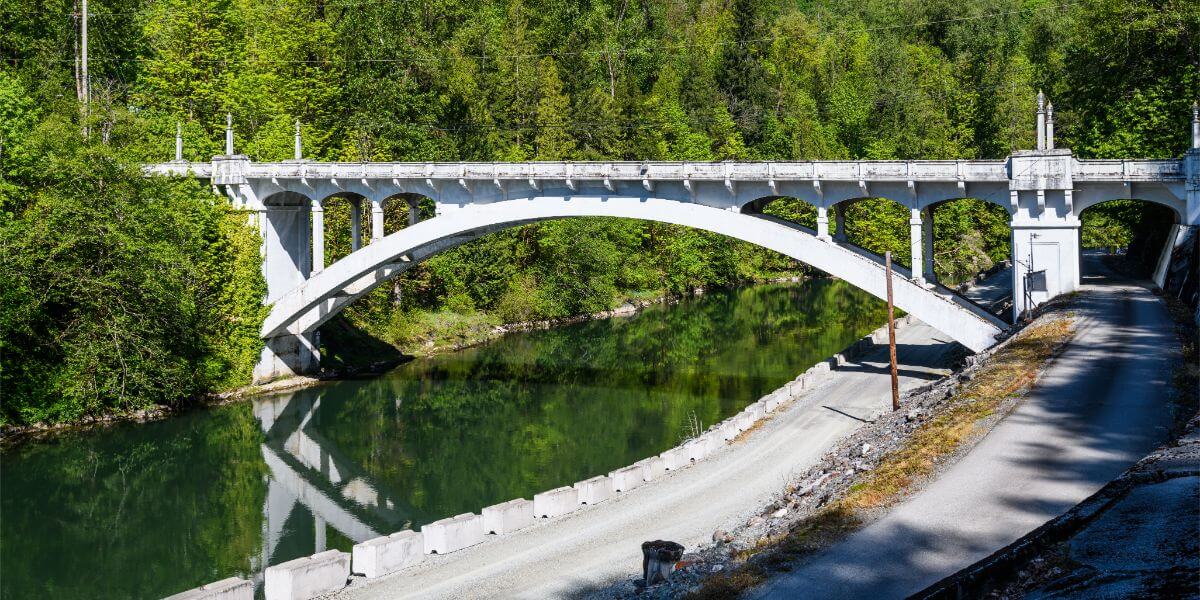
Concrete is located in the North Cascades region of Skagit County, about 90 miles northeast of Seattle. This tiny town offers a unique escape from city life while staying close to major attractions.
The concrete manufacturing industry gave the town its name and shaped its early economy. Today, Concrete serves as a gateway for outdoor recreation and keeps its small-town feel with fewer than 800 residents.
You’ll find great hiking in the surrounding Cascade Mountains, with trails to waterfalls and scenic viewpoints. Baker Lake nearby offers fishing, boating, and camping during the warmer months.
Concrete’s main street has local businesses, antique shops, and cafes that reflect its laid-back atmosphere. The town hosts an annual Ghost Walk and preserves several historic buildings from its industrial days.
Retirees and remote workers move to the area for affordable housing and a slower pace of life. Property values remain low compared to western Washington, making it attractive for those seeking mountain living without high prices.
Winter brings snow and cold, while summers are mild and perfect for outdoor activities. The town’s location provides easy access to North Cascades National Park and Mount Baker-Snoqualmie National Forest.
Where is Concrete?
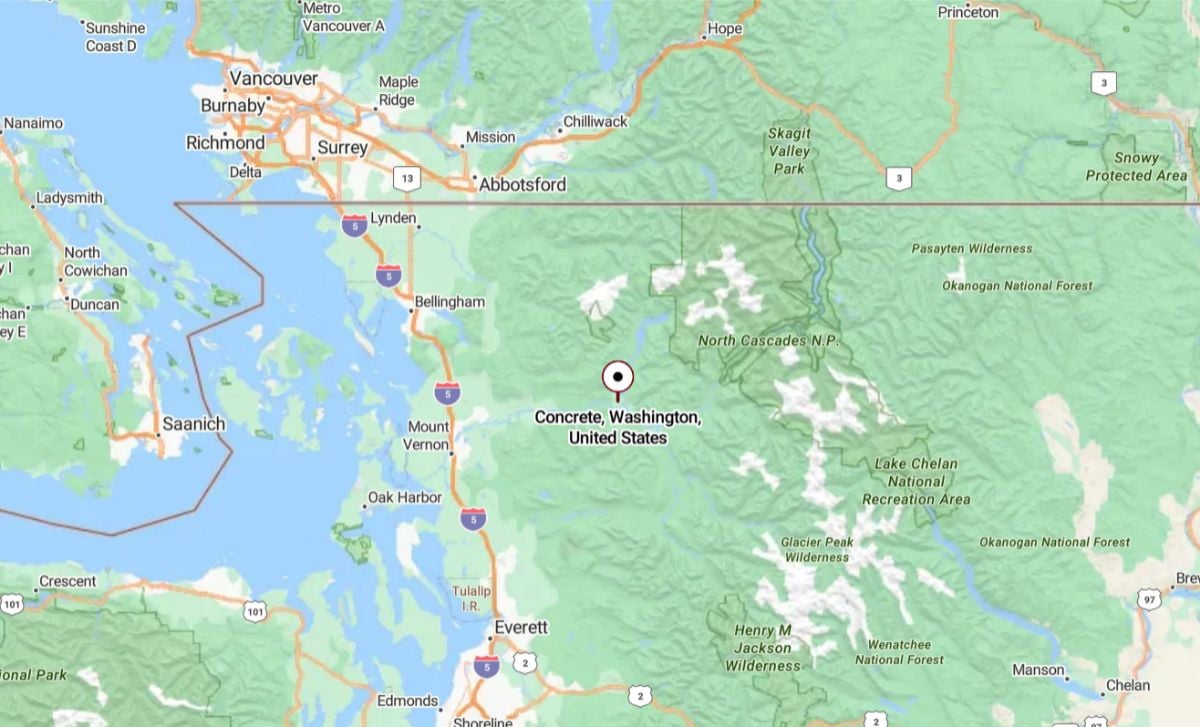
Concrete is a small town in north-central Skagit County, nestled at the confluence of the Baker and Skagit Rivers near the western foothills of the North Cascades. It lies about 35 miles east of Mount Vernon and serves as a gateway to outdoor adventures like hiking, kayaking, and scenic drives through North Cascades National Park.
Founded in the early 1900s around cement and hydroelectric industries, Concrete blends historic charm with access to natural beauty.
6. Roslyn
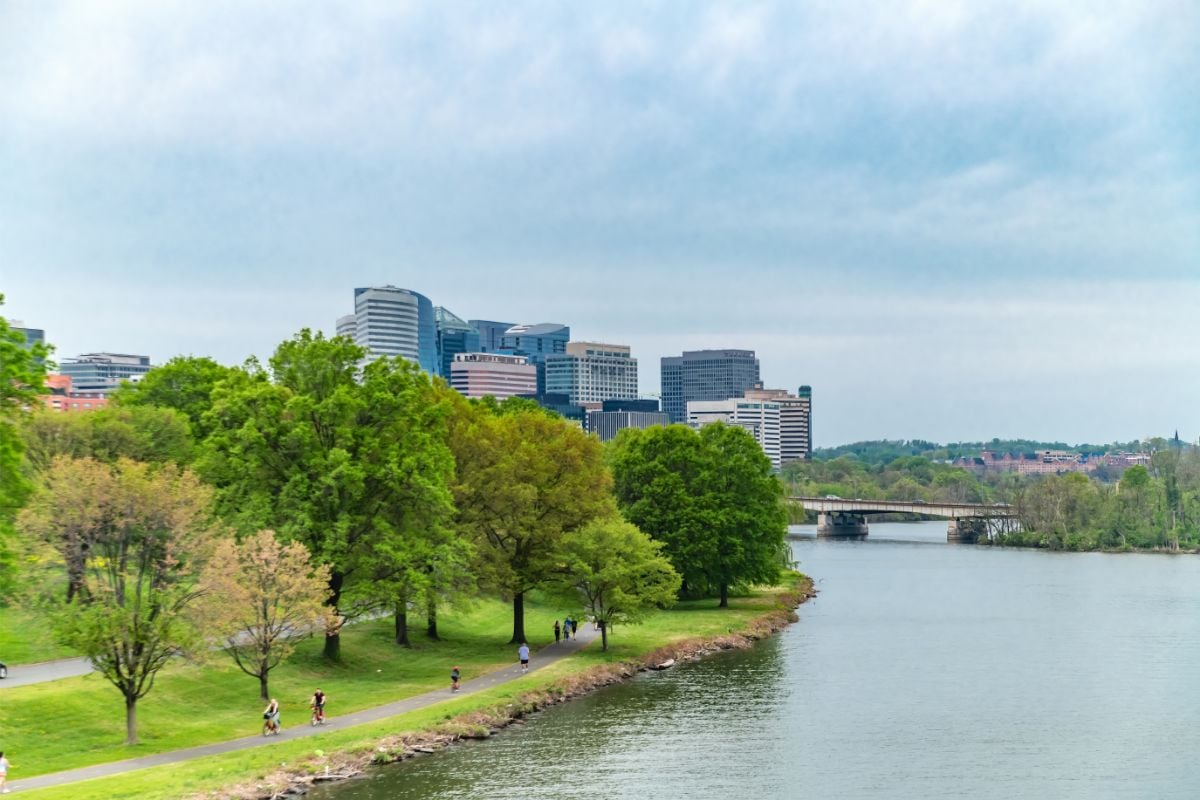
Roslyn is in the Cascade Mountains about 80 miles east of Seattle, offering mountain charm and television fame. This former coal mining town became well-known as the filming location for the 1990s TV series “Northern Exposure.”
Roslyn’s historic downtown remains well-preserved, with original brick buildings from the late 1800s. The main street keeps its frontier character with local shops, cafes, and galleries.
The Roslyn Cemetery stands out as a unique place to visit. It has 26 sections for different ethnic groups who worked in the coal mines, telling the story of the town’s diverse past.
Outdoor lovers enjoy Roslyn’s location near the Cle Elum River and many hiking trails. The nearby Suncadia Resort offers year-round activities like golf, skiing, and mountain biking.
Coal mining powered Roslyn’s economy for nearly a century until the mines closed in 1963. Today, tourism and outdoor recreation support the community.
You’ll find affordable housing compared to Seattle, with many historic homes and cabins available. About 900 residents enjoy the slower pace of mountain life.
Winter brings snow and cold, while summers are mild and pleasant for outdoor activities. At 2,200 feet elevation, Roslyn experiences true mountain seasons.
Where is Rosslyn?
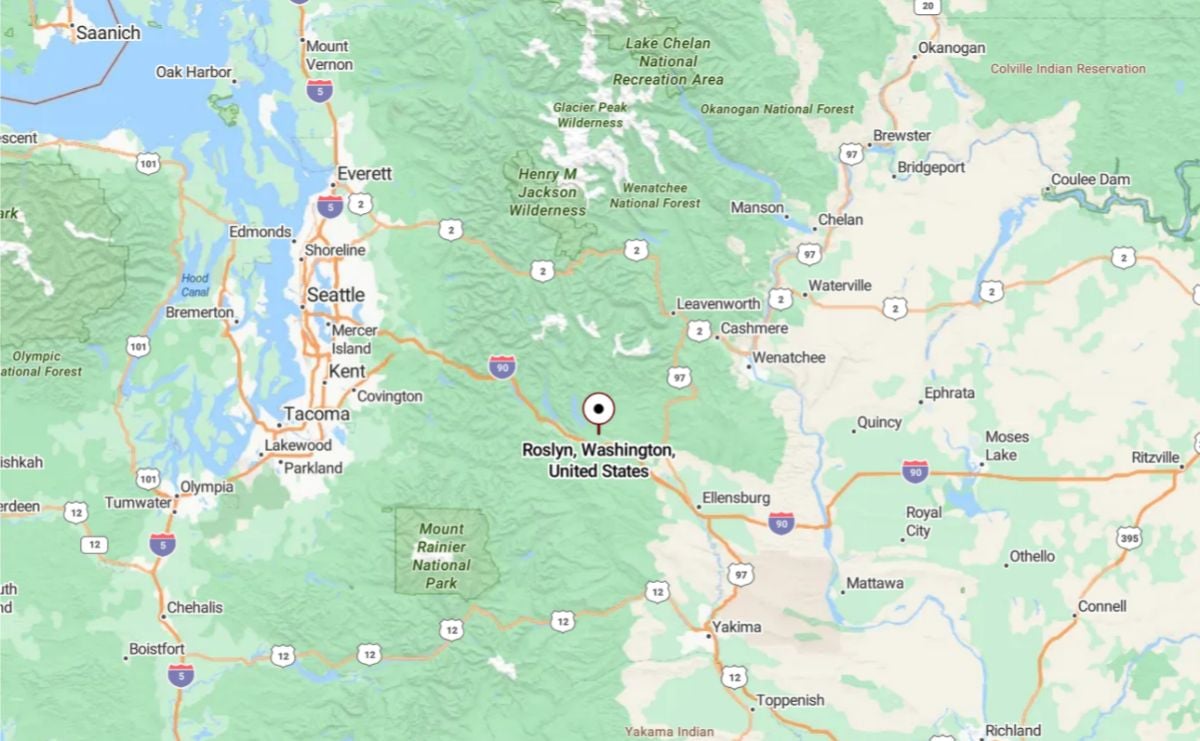
Rosslyn is a small, unincorporated community along the Skagit River in Skagit County, located about 25 miles east of Mount Vernon in northwest Washington. Nestled at the western edge of the North Cascades foothills, it provides a peaceful riverside setting with easy access to outdoor activities like fishing, hiking, and boating.
Rosslyn’s rural character and scenic surroundings make it a quiet retreat tucked into the valley between larger Cascade towns.
5. Twisp

Twisp is situated in the scenic Methow Valley in north-central Washington and serves as the artistic heart of the region. This small town combines outdoor recreation with a lively arts community.
You’ll see art galleries and outdoor sculptures throughout town. The vibrant arts scene draws both local and visiting artists all year.
The Saturday farmers market offers fresh goat cheese and handmade items from local artisans. You can shop for unique products and connect with the community.
Twisp gives you access to outdoor activities in the Methow Valley. Hiking, cross-country skiing, and mountain biking are popular here.
Tourism, agriculture, and the arts shape the local economy. Many residents work in creative fields or outdoor recreation.
You’ll appreciate the slower pace and strong sense of community. Twisp keeps its small-town charm while offering cultural amenities found in bigger cities.
Housing costs remain affordable compared to Western Washington. The area attracts retirees and remote workers seeking mountain living with an artistic touch.
Where is Twisp?
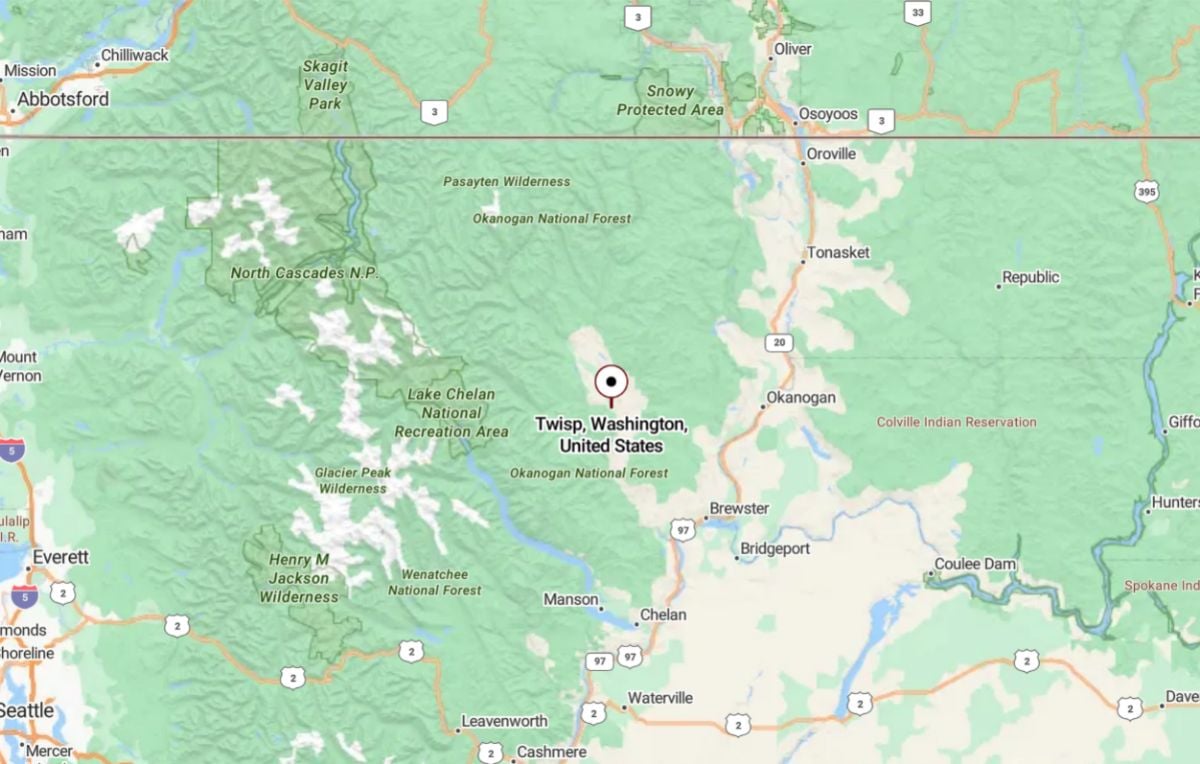
Twisp is a small town in north-central Okanogan County, located in the Methow Valley where the Twisp and Methow Rivers meet. It lies about 115 miles east of Seattle, nestled in the eastern foothills of the North Cascades.
Known for its vibrant arts scene and access to outdoor recreation, Twisp offers hiking, skiing, and community events in a scenic, small-town setting.
4. La Conner
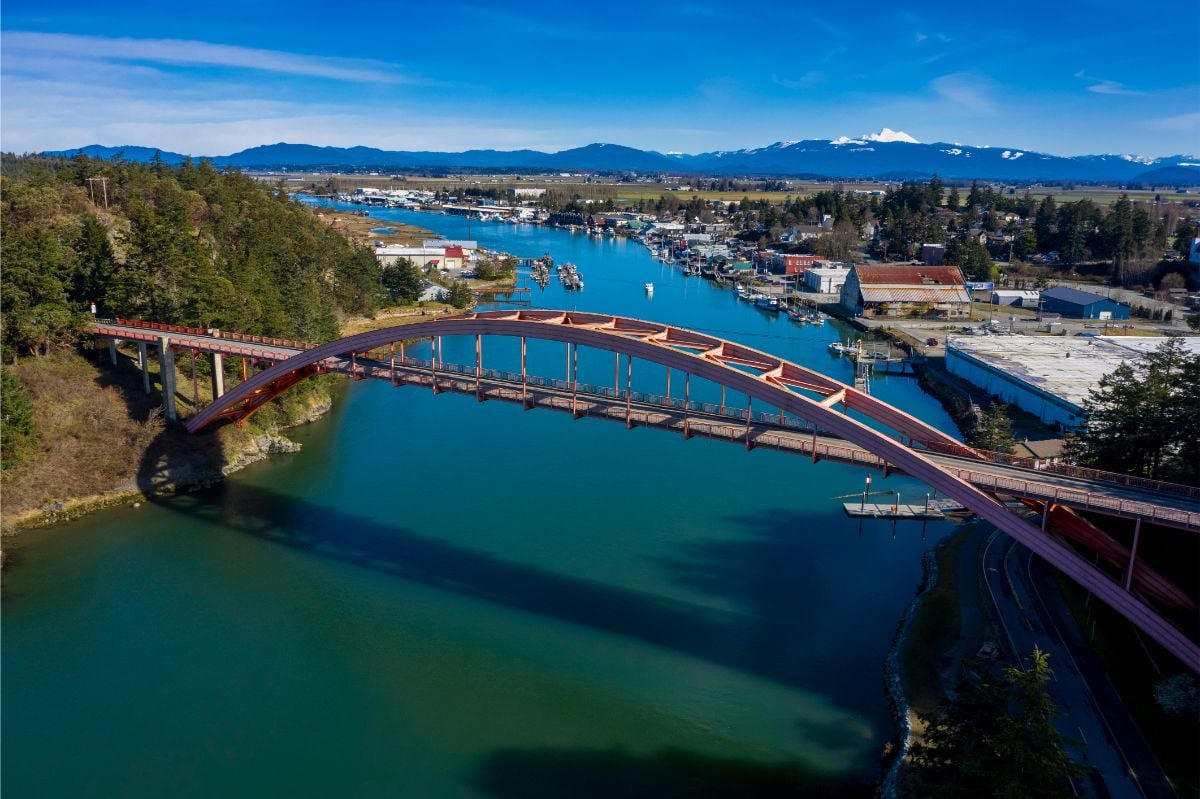
La Conner sits in the Skagit Valley, about 70 miles north of Seattle. This picturesque town offers views of the San Juan Islands and keeps its historic charm along the waterfront.
You’ll find La Conner’s downtown perfect for walking. The compact size makes it easy to explore on foot and discover shops, galleries, and cafes.
Agriculture, especially tulip and flower farming, drives the local economy. In spring, you can see stunning tulip fields that attract visitors from across the region.
La Conner has several museums, including the Museum of Northwest Art and the Skagit County Historical Museum. Each April, the Tulip Festival celebrates the area’s agricultural roots.
You’ll find great dining on First Street, from casual cafes to upscale restaurants. Many places serve fresh seafood and ingredients from the Skagit Valley.
The town offers easy access to kayaking, fishing, and hiking. Deception Pass State Park is just minutes away with trails and scenic views.
Housing costs in La Conner are more affordable than Seattle, though waterfront homes are pricier. Retirees and remote workers come for small-town living with city amenities nearby.
About 900 people live in La Conner year-round. The community supports local businesses and hosts regular farmers markets with local produce and crafts.
Where is La Conner?
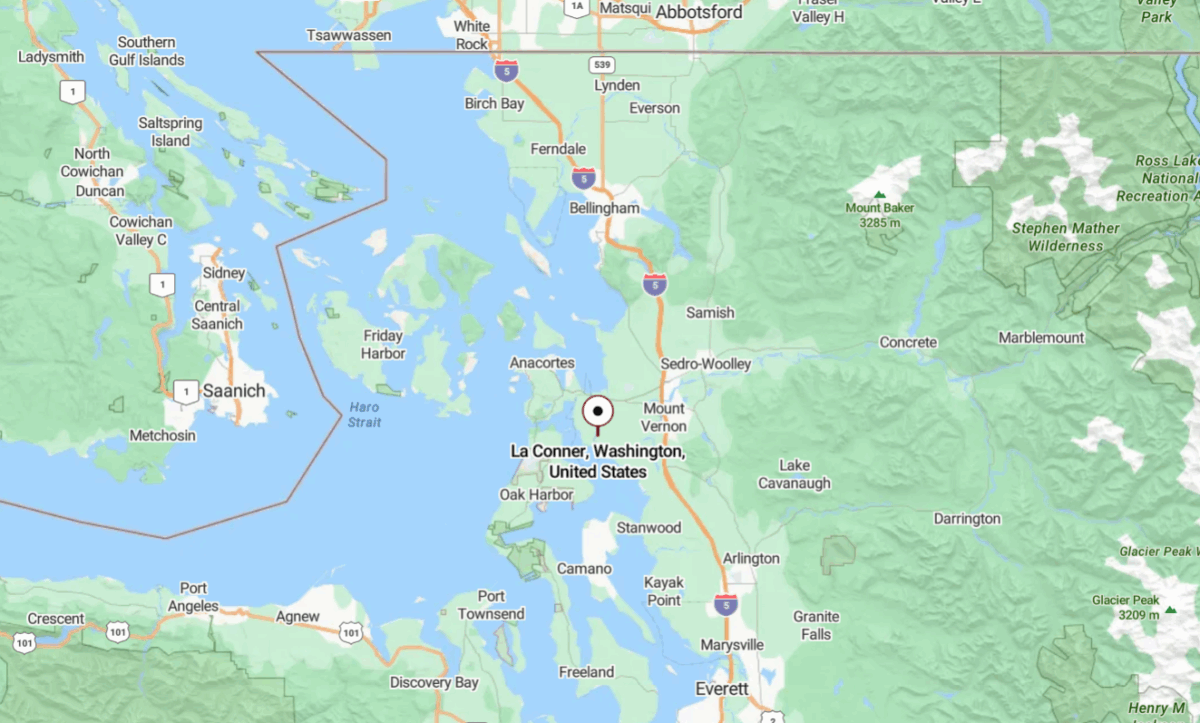
La Conner is a quaint waterfront town in Skagit County, situated on Swinomish Channel between Fidalgo and Whidbey Islands. It lies about 80 miles north of Seattle and 40 miles south of Vancouver, BC, offering scenic views and a historical downtown full of galleries and shops.
Known for its tulip festival, maritime heritage, and charming small-town vibe, it draws both art lovers and nature enthusiasts.
3. Winthrop
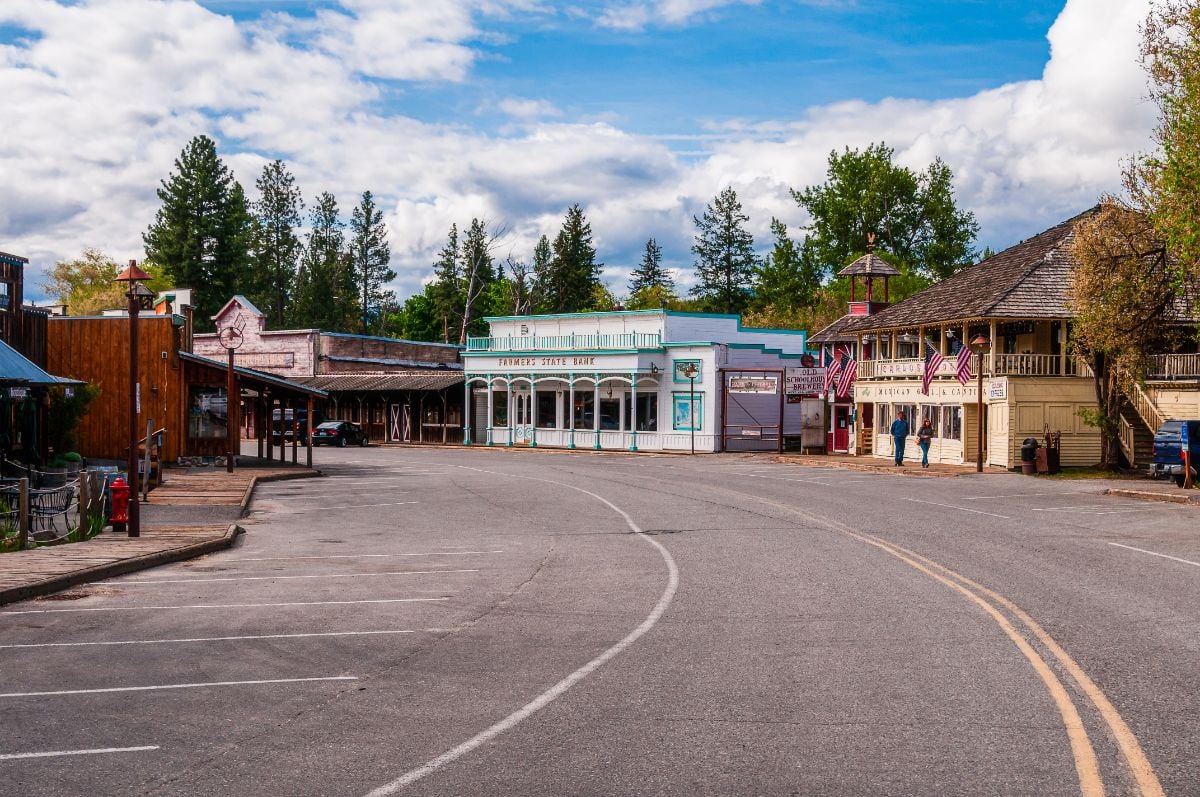
Winthrop is located in the Methow Valley in north-central Washington, offering an Old West experience with wooden boardwalks and frontier-style buildings. This charming mountain town is your gateway to the North Cascades.
You’ll see dramatic mountain views and pristine wilderness all around. The town keeps its Western theme throughout the historic downtown district, creating a unique atmosphere.
Tourism fuels the local economy, along with outdoor recreation businesses and seasonal hospitality. The town changes with the seasons, offering cross-country skiing and snowshoeing in winter, then hiking and mountain biking in warmer months.
You can explore trail networks that start right in town. The Methow Valley Sport Trails Association maintains over 120 miles of trails for year-round fun.
Downtown Winthrop features local shops, art galleries, and restaurants in Western-style buildings. You can shop for unique gifts, outdoor gear, and regional art along the wooden sidewalks.
The town hosts annual events like the Winthrop Rhythm and Blues Festival and winter celebrations. These events show the strong community spirit.
If you’re thinking about moving, Winthrop offers a slower pace and access to world-class outdoor activities. The town provides essential services while keeping its small-town character.
Where is Winthrop?
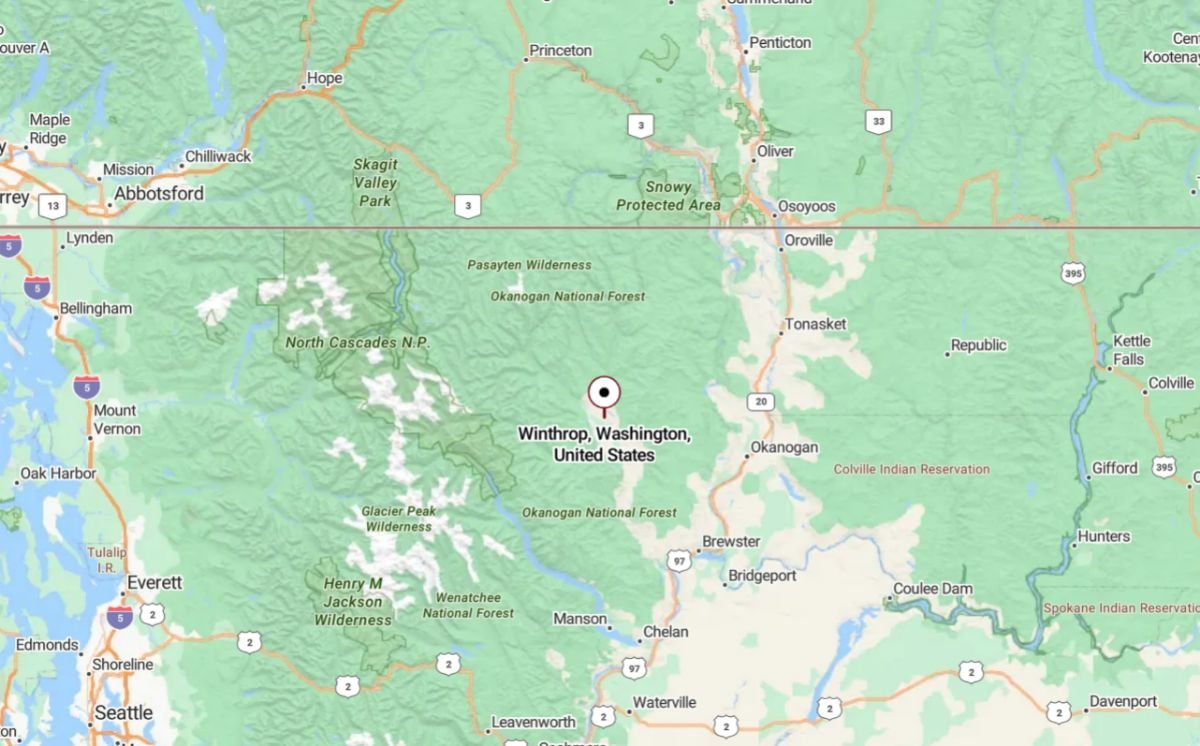
Winthrop is a small town nestled in the Methow Valley of north-central Okanogan County, just east of the North Cascade Mountains. It sits along the Methow River at the intersection of Highways 20 and 153, approximately 260 miles northeast of Seattle.
Known for its preserved Old West–style architecture, vibrant arts scene, and easy access to outdoor recreation, Winthrop serves as a popular gateway to hiking, biking, and skiing in the surrounding mountain wilderness.
2. Leavenworth

Leavenworth brings the Cascade Mountains to life with an authentic Bavarian theme. This charming mountain town sits two hours east of Seattle and offers Alpine architecture and German culture.
You’ll find traditional German restaurants, breweries, and shops selling imported goods. Strict architectural guidelines keep the Alpine village look all year.
Tourism supports Leavenworth’s economy. The town hosts festivals like Oktoberfest and Christmas markets. Local businesses welcome visitors looking for outdoor adventures and cultural experiences.
Outdoor lovers enjoy hiking trails nearby. Colchuck Lake offers stunning alpine scenery, and the surrounding mountains provide skiing, snowshoeing, and mountaineering.
You can visit the Leavenworth Reindeer Farm and take sleigh rides in winter. The area also has many wineries and breweries highlighting local craft beverages.
Housing costs reflect the town’s popularity with tourists. Most jobs are in hospitality, retail, and outdoor recreation. Despite busy seasons, the town keeps a small-town feel.
Lake Wenatchee is nearby for more recreation. You’ll find great spots for whitewater rafting, mountain biking, and snowboarding depending on the season.
Leavenworth’s small size makes it easy to walk everywhere. Restaurants, shops, and entertainment are all close by. Public events and festivals happen often in the town center.
Where is Leavenworth?
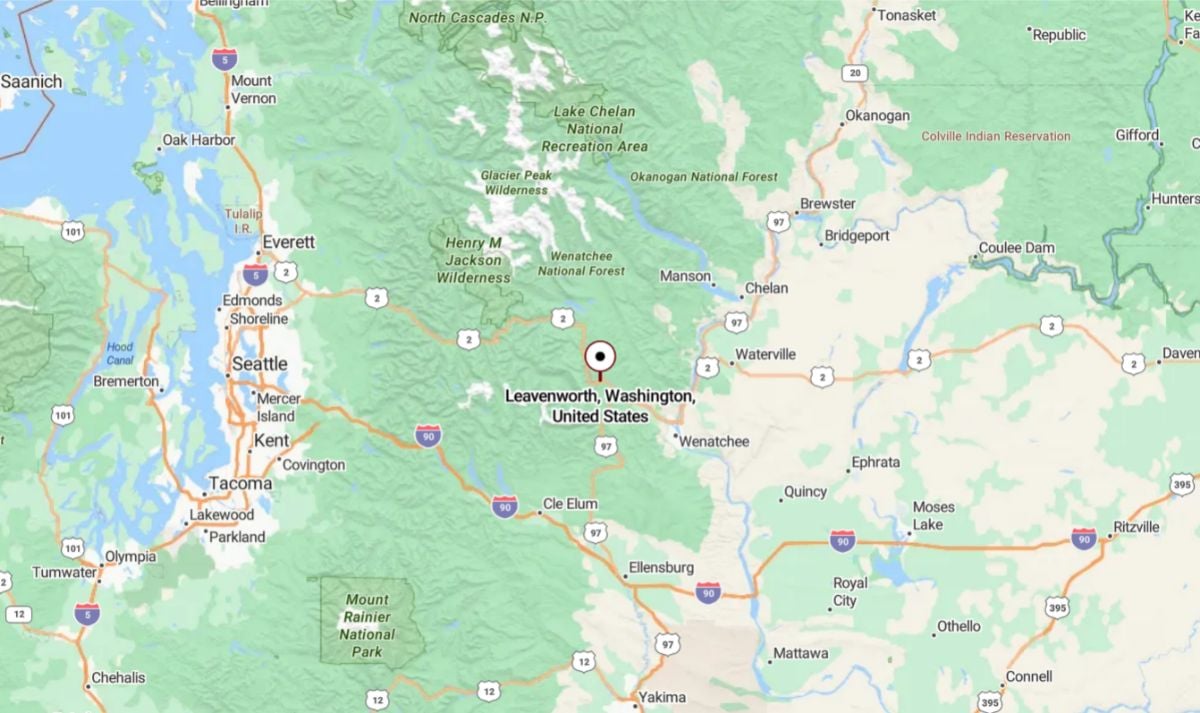
Leavenworth is a charming village-style town nestled in the eastern foothills of the Cascade Mountains, along U.S. Route 2 at the entrance to the Wenatchee River Valley. It lies about 120 miles east of Seattle and 25 miles west of Wenatchee, tucked into a scenic river canyon surrounded by alpine forests.
Famous for its Bavarian-themed architecture, festivals like Oktoberfest and Christmas Lighting, and year-round outdoor recreation, Leavenworth attracts visitors with its unique blend of mountain culture and European charm.
1. Port Townsend
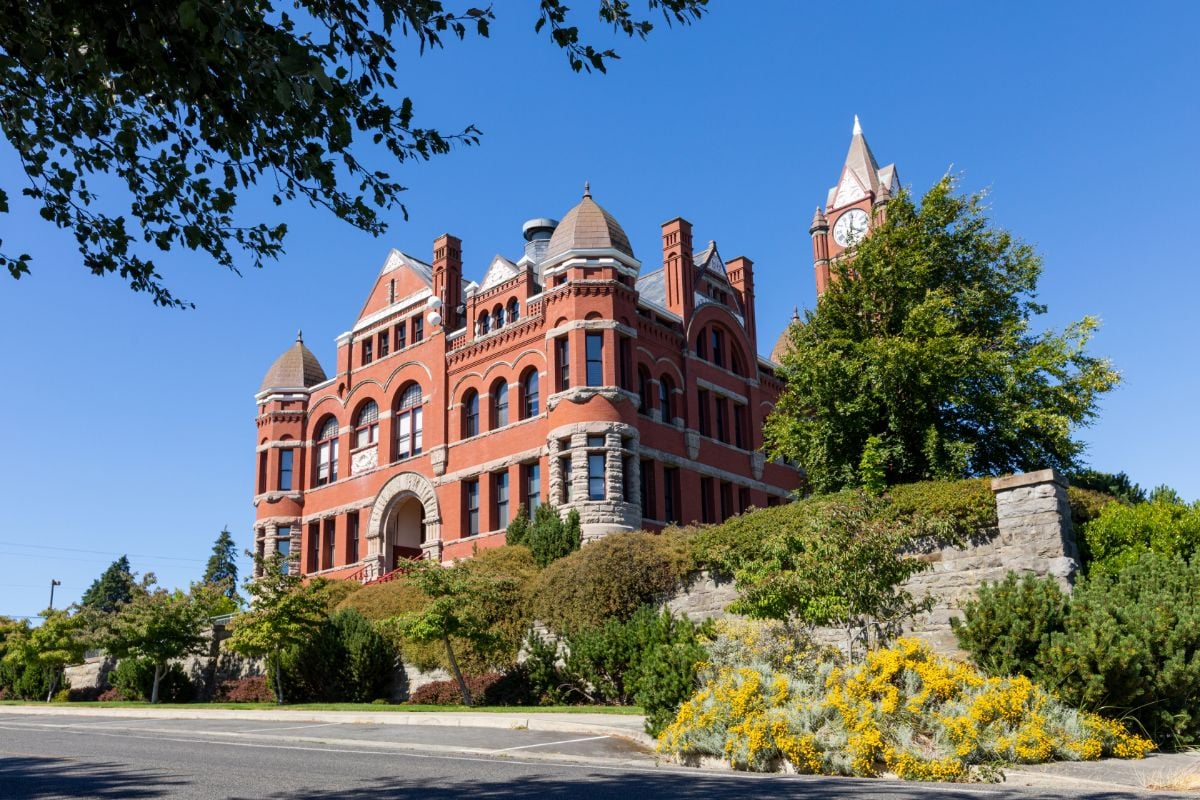
Port Townsend is on the northeastern tip of the Olympic Peninsula, where the Strait of Juan de Fuca meets Puget Sound. This Victorian seaport town of about 10,000 residents blends maritime history with artistic culture.
You can admire well-preserved Victorian architecture in Port Townsend, which creates a charming coastal destination. Magnificent 19th-century buildings line the waterfront and the historic uptown district.
Maritime trades and boat building thrive here. Wooden boat festivals take place in the town, and skilled craftsmen work in active shipyards.
Fort Worden State Park offers historic military bunkers and beautiful water views. The park also hosts the Centrum arts organization, which brings concerts and workshops throughout the year.
Downtown features galleries, antique shops, and restaurants in restored Victorian buildings. Many restaurants serve fresh local seafood and Pacific Northwest cuisine.
Port Townsend’s location gives you easy access to Olympic National Park and ferry routes to the San Juan Islands. The town offers beaches, hiking trails, kayaking, and sailing.
Housing costs are more affordable than Seattle, though waterfront homes can be expensive. Retirees, artists, and remote workers move here for a quieter coastal lifestyle.
The arts scene includes theaters, music venues, and festivals throughout the year. Residents value the town’s historic charm and natural beauty.
What Makes a Town a Hidden Gem?
Hidden gems in Washington State have certain traits that set them apart from popular tourist spots. These towns offer authentic experiences, smaller populations, and unique attractions without large crowds.
Criteria for Defining Hidden Gems
Population size matters when defining a hidden gem. Most have fewer than 5,000 residents, creating close-knit communities where you can experience genuine local culture.
Limited tourist infrastructure also sets these towns apart. You’ll find fewer chain hotels and restaurants, with more family-owned businesses and local accommodations.
Unique local attractions shape each hidden gem. These may include historic buildings, natural formations, or cultural sites not widely advertised.
Accessibility plays a role in their hidden status. Many require scenic drives through rural areas or are located off major highways, which keeps them less crowded.
The local economy often centers on agriculture, logging, or fishing. Residents usually work in these industries, preserving the small-town atmosphere.
Difference Between Hidden Gems and Popular Destinations
Visitor volume is the most obvious difference. Hidden gems in Washington receive far fewer visitors than places like Leavenworth or Pike Place Market, making local interactions more personal.
Popular destinations invest in heavy tourism promotion, while hidden gems rely on word-of-mouth and discovery by adventurous travelers.
Popular spots have extensive infrastructure, including parking and visitor centers. Hidden gems have minimal amenities, so you need to plan ahead.
Seasonal variations affect these towns differently. Popular destinations get crowded during peak seasons, but hidden gems stay peaceful throughout the year.
Popular destinations often focus on tourists, while hidden gems serve local residents first. This lets you experience authentic community life.
Planning Your Visit to Washington’s Hidden Towns
Washington’s geography means travel conditions differ between coastal and mountain towns. Rural destinations need different planning than urban areas, especially for lodging and accessibility.
Best Times of Year to Explore
Spring (March-May) brings mild weather and blooming wildflowers to lower elevation towns. Mountain communities like Twisp may still have snow, but coastal gems remain accessible.
Summer (June-August) offers the best weather for outdoor activities and open businesses. This is also the busiest period with higher lodging rates.
Fall (September-November) features beautiful foliage and fewer crowds. Mountain towns display autumn colors, while coastal areas stay comfortable.
Winter (December-February) can limit access to mountain towns but offers unique experiences. Coastal towns remain active and have the most authentic local atmosphere.
Travel Tips for Rural Destinations
Book accommodations in advance, especially in summer. Many small towns in Washington have limited lodging, so early reservations help.
Check road conditions for mountain areas and make sure your vehicle has enough fuel. Some hidden gems have no gas stations nearby.
Business hours can vary widely. Many restaurants and shops close early or have limited hours, especially on weekdays.
Cell service may be unreliable in rural areas. Download offline maps and let others know your travel plans before you go.
Frequently Asked Questions
These questions cover common concerns about moving to or visiting Washington’s small towns. Each answer gives details about location, amenities, and lifestyle.
What are the top small towns in Washington for a peaceful retirement?
Vashon Island offers a quiet island lifestyle just 20 minutes by ferry from Seattle. The community includes organic farms, art galleries, and a strong sense of community.
White Salmon provides mountain views and outdoor recreation along the Columbia River Gorge. Retirees enjoy lower housing costs and access to hiking, fishing, and scenic beauty.
Stevenson combines small-town charm with natural attractions like the Bridge of the Gods and Beacon Rock State Park. The walkable downtown and nearby outdoor activities appeal to active retirees.
Which small towns near Seattle offer a unique local charm?
Vashon Island is the closest option, accessible by ferry from West Seattle or Tacoma. The island keeps its rural feel with farmers markets, artisan shops, and community theater.
Its economy focuses on agriculture, arts, and small businesses. Residents enjoy a slower pace while staying connected to Seattle.
What are affordable small towns in Washington for homebuyers?
Ritzville has some of the most affordable homes in the state. The town serves as the county seat of Adams County and provides essential services.
Ritzville sits along Interstate 90, offering easy access to Spokane and other eastern cities. The local economy relies on agriculture, especially wheat farming and cattle ranching.
Omak is another budget-friendly choice in north-central Washington. Housing costs are low, and the town offers hospitals, schools, and recreation.
Omak is located in the Okanogan Valley and offers year-round outdoor recreation. The town hosts the Omak Stampede rodeo and gives access to hiking, fishing, and hunting.
Agriculture, timber, and tourism drive the local economy. Omak acts as a hub for shopping, medical services, and government offices.
Ritzville preserves historic architecture and a small-town feel along Interstate 90. The town features antique shops, local restaurants, and scenic attractions for visitors seeking quieter experiences.
What are the best small towns in Washington for families with children?
White Salmon offers excellent outdoor recreation for active families. The town provides good schools and affordable living compared to cities.
Children can enjoy hiking, river sports, and seasonal festivals. Its location in the Columbia River Gorge gives families year-round recreation and natural beauty.
Stevenson features attractions like the Columbia Gorge Interpretive Center and hiking trails. The town’s small size creates a safe environment for children to explore and join community events.
Where are the lesser-known yet picturesque towns located in western Washington?
Vashon Island is one of western Washington’s most scenic and accessible communities. The island features rolling hills, forests, and waterfront areas with views of Puget Sound and Mount Rainier.
Ferries connect visitors to Vashon Island, which helps preserve its natural beauty. The island offers beaches, parks, and scenic drives that highlight the Pacific Northwest’s landscapes.






